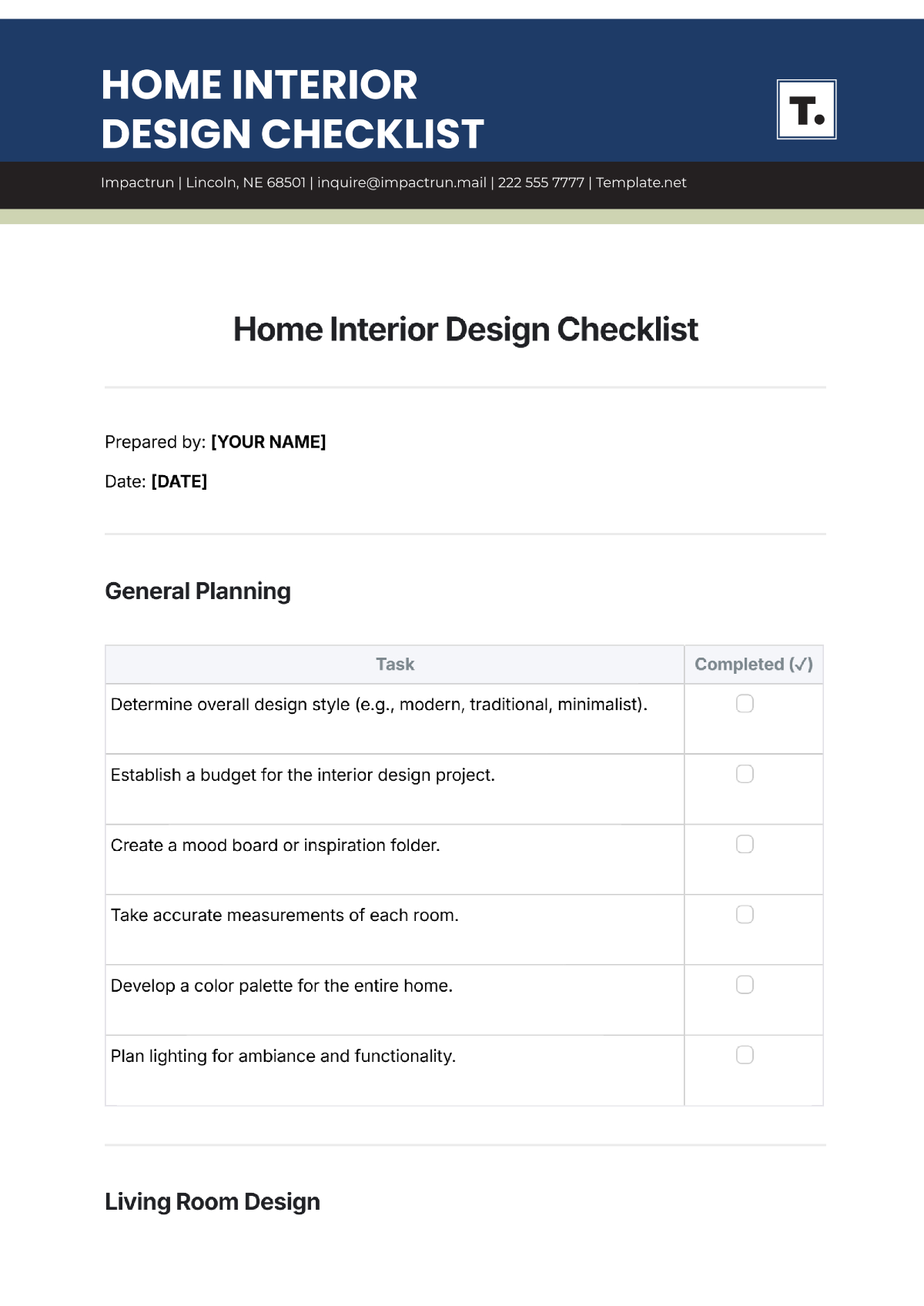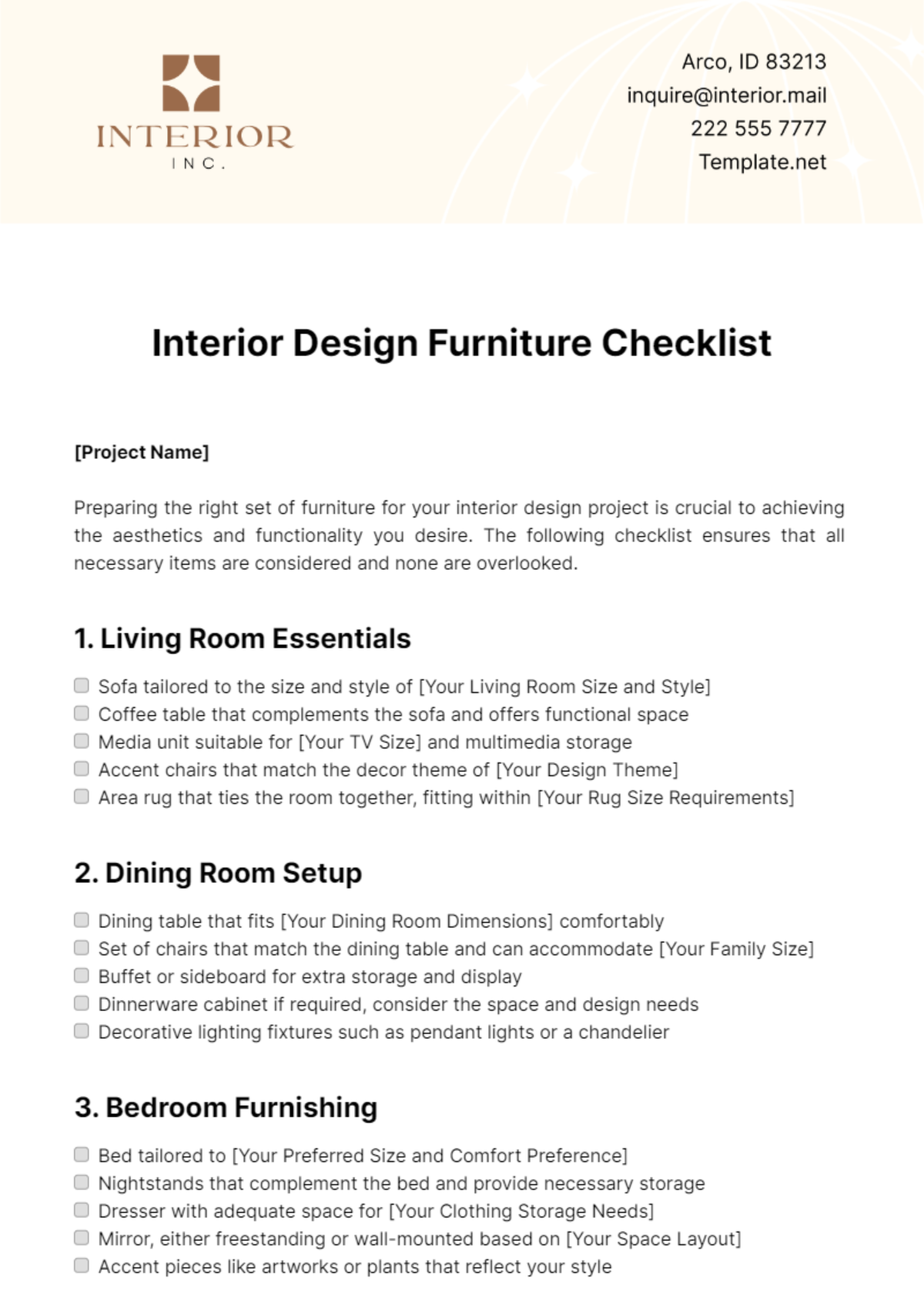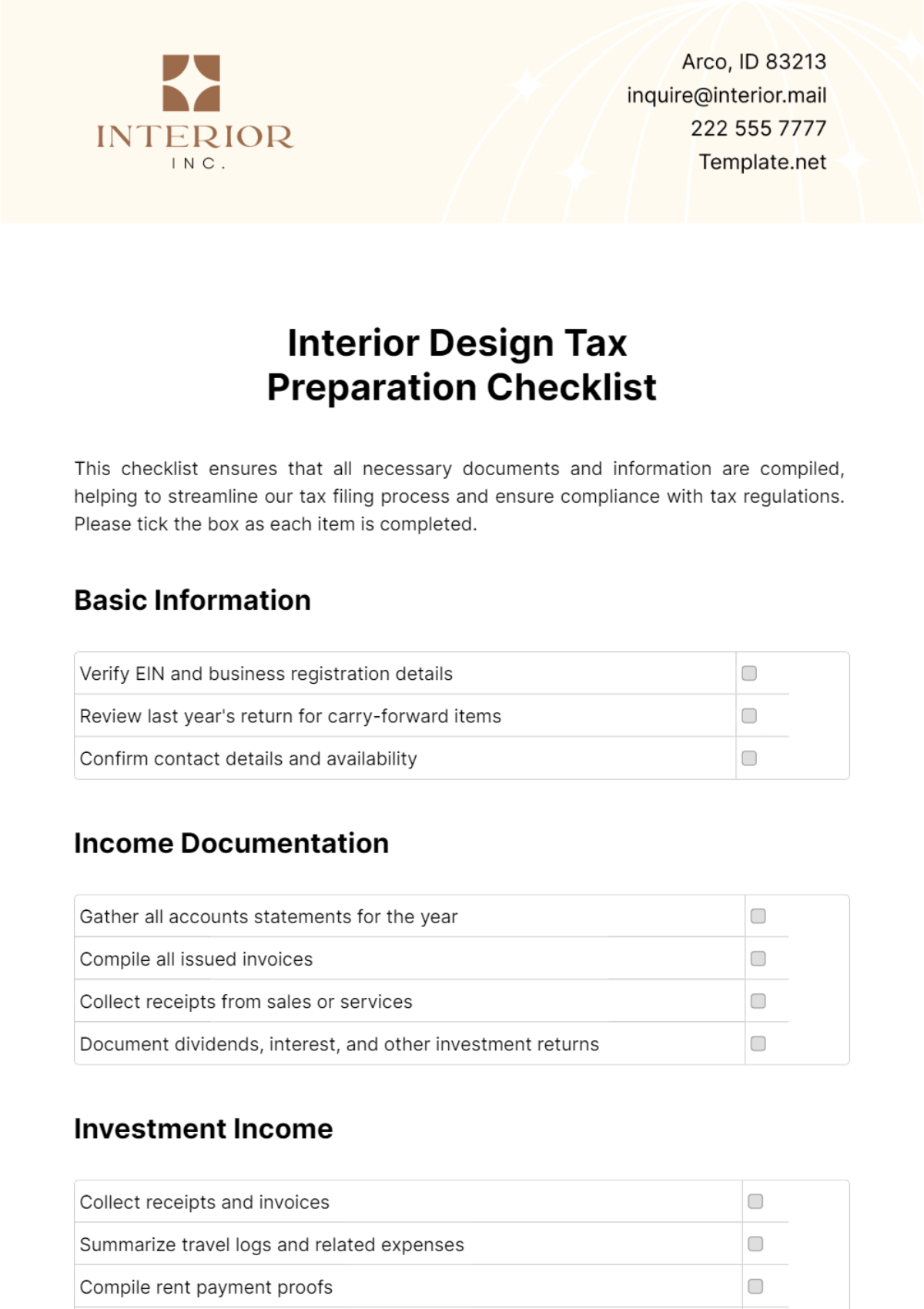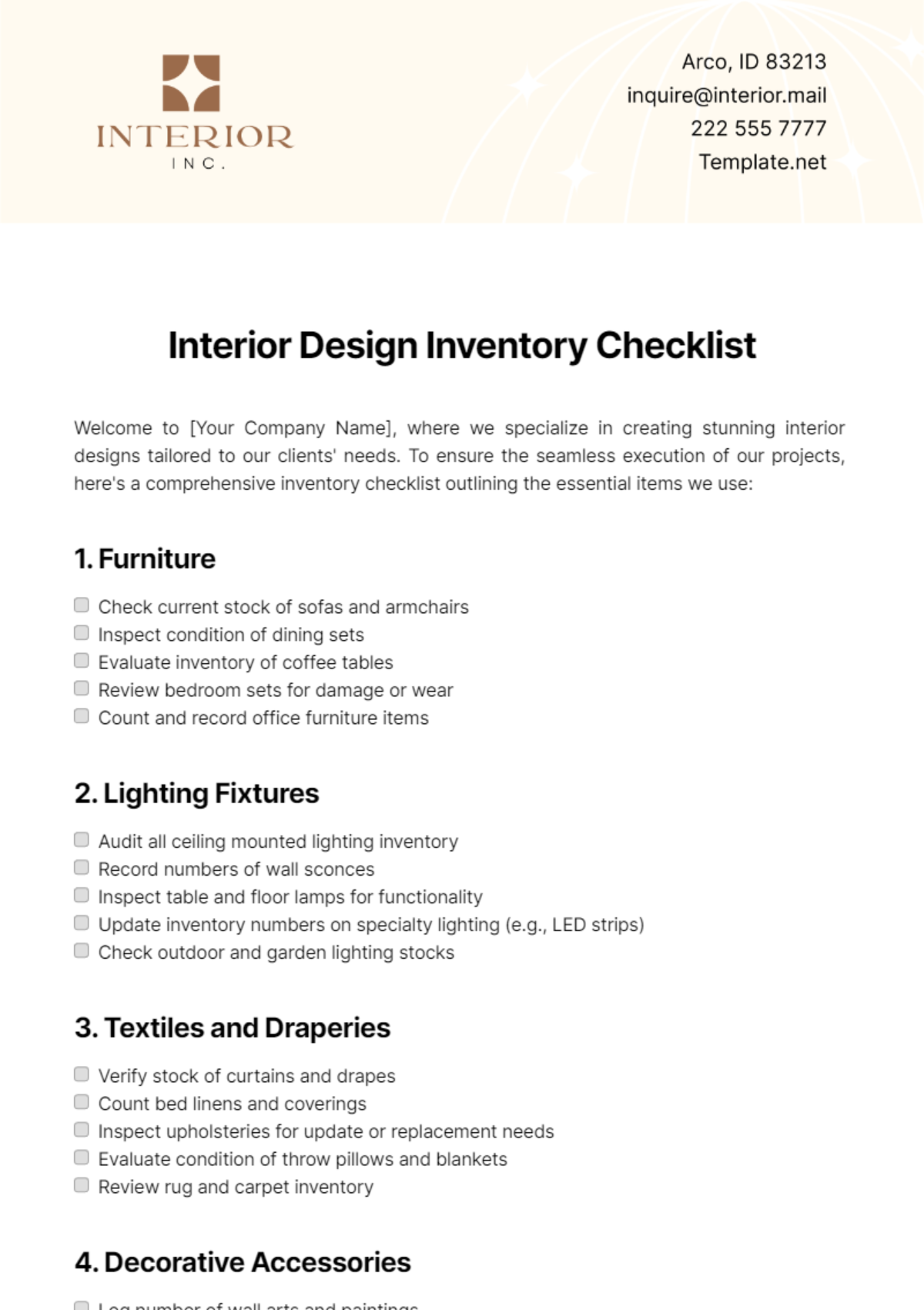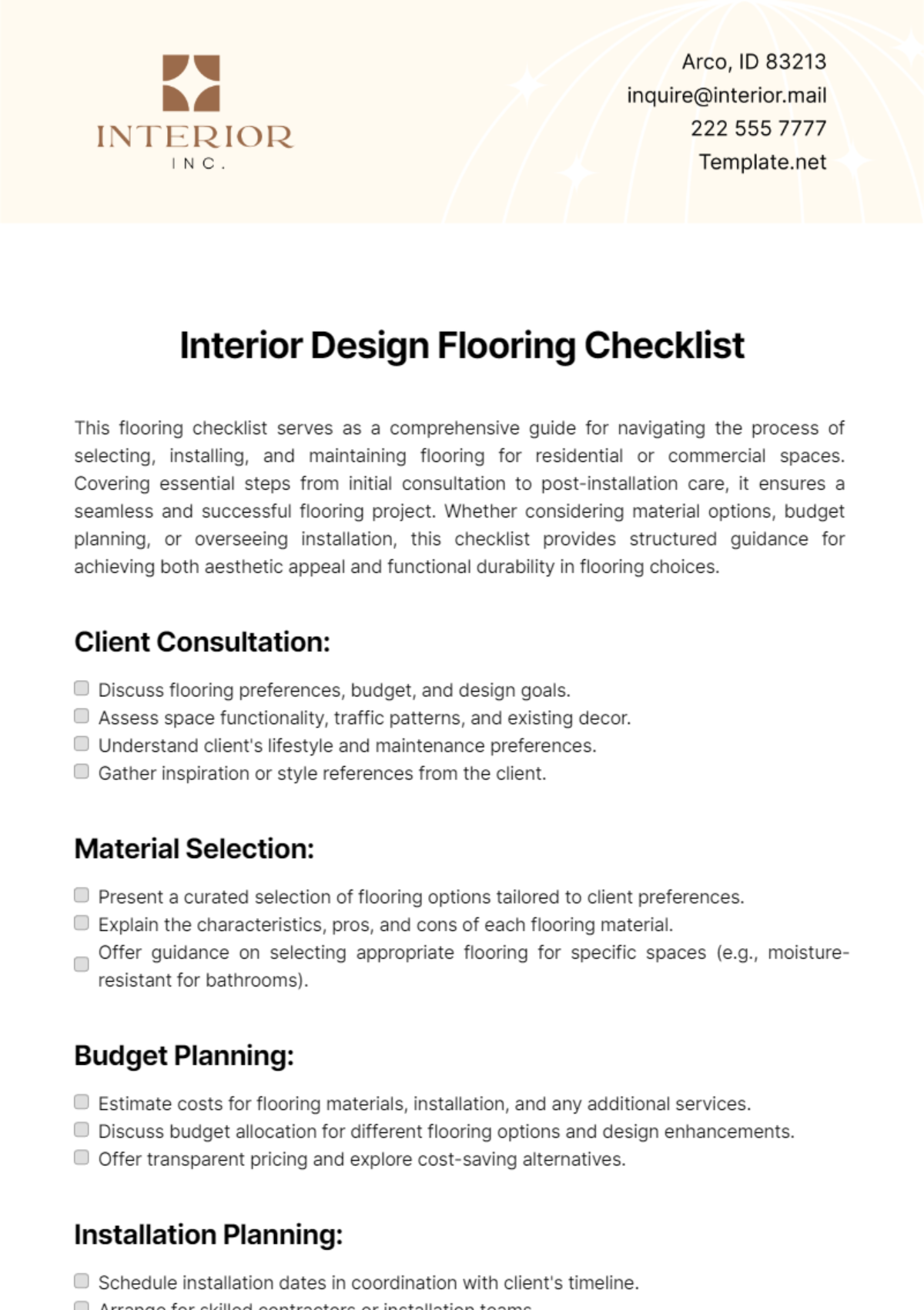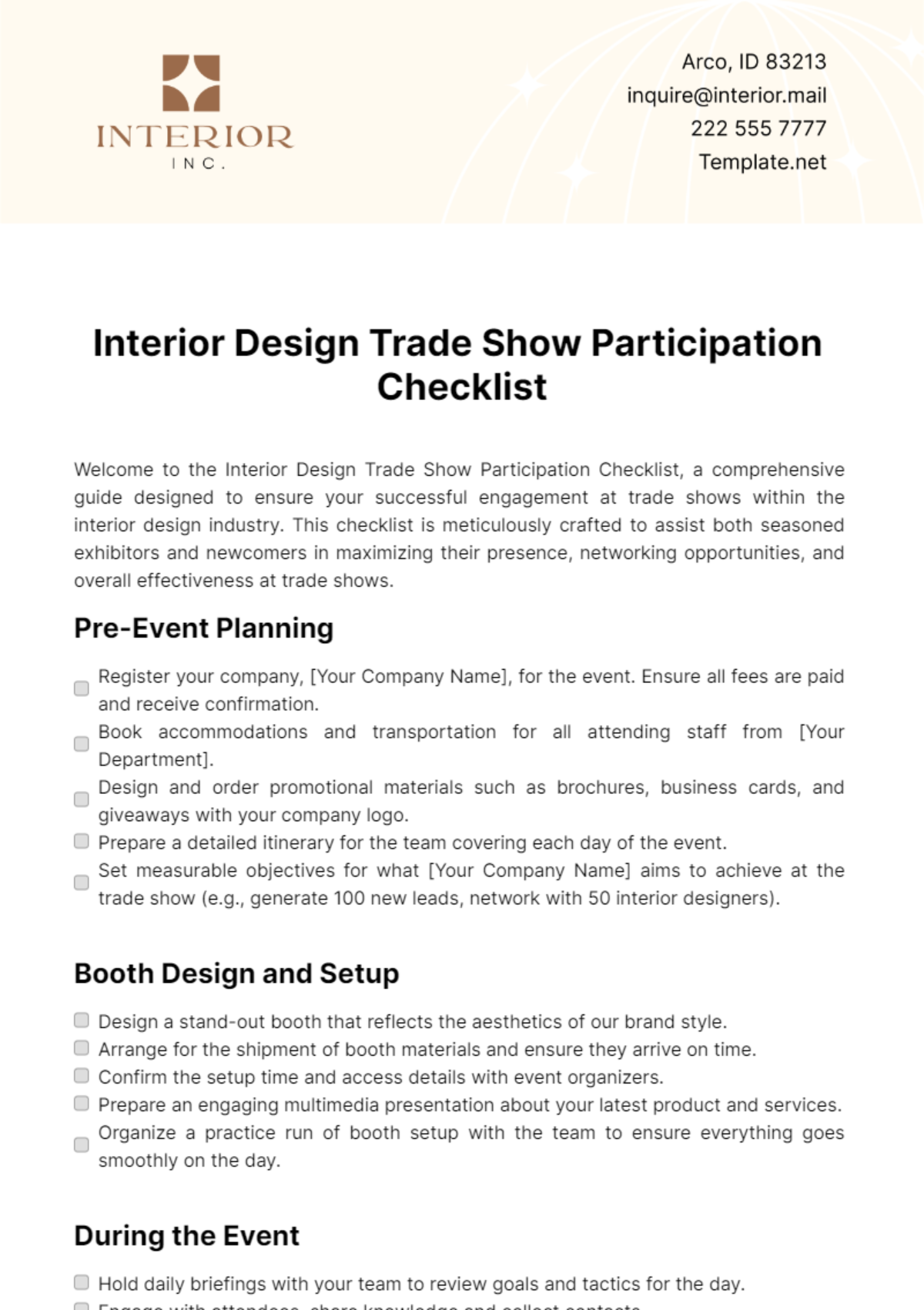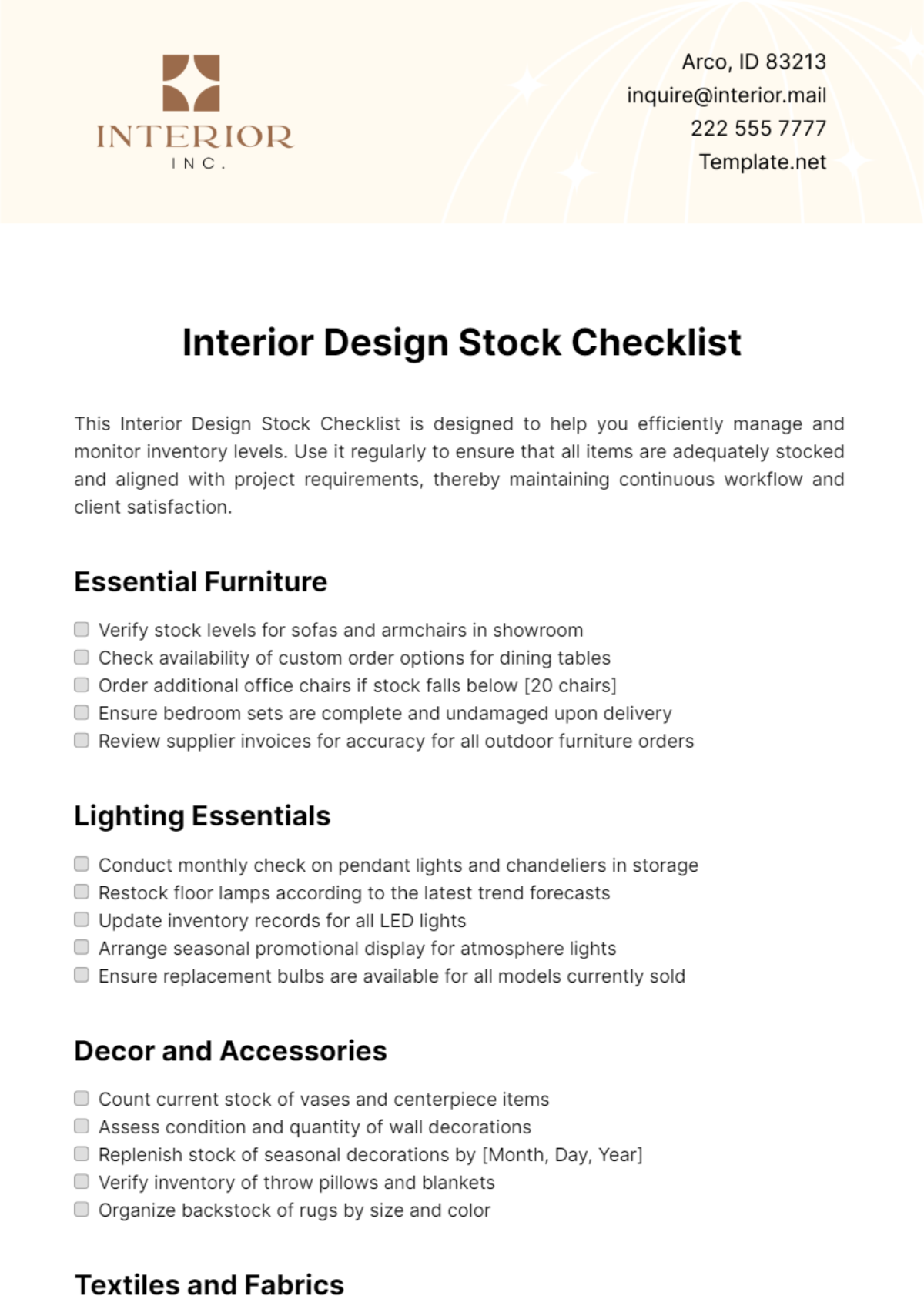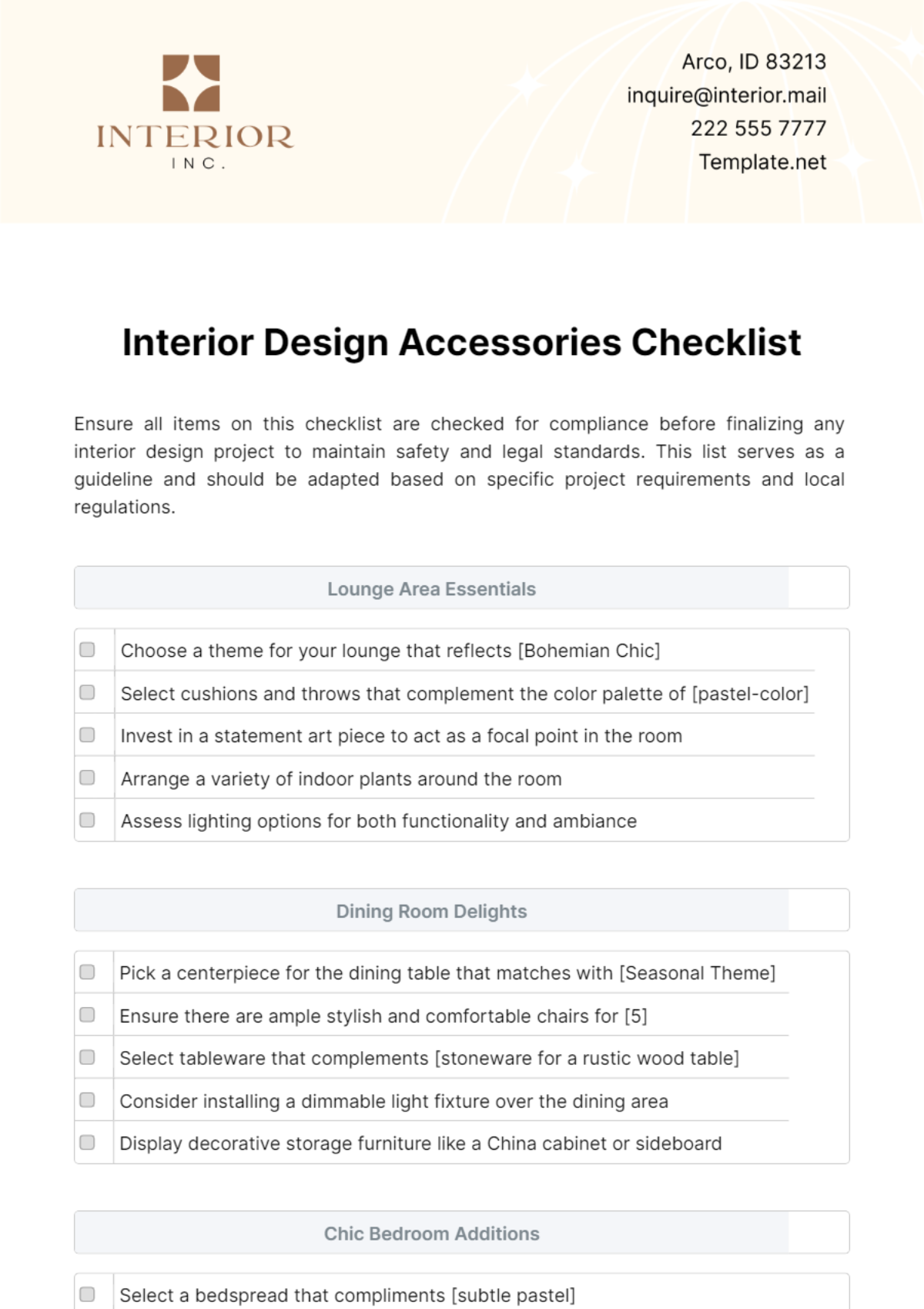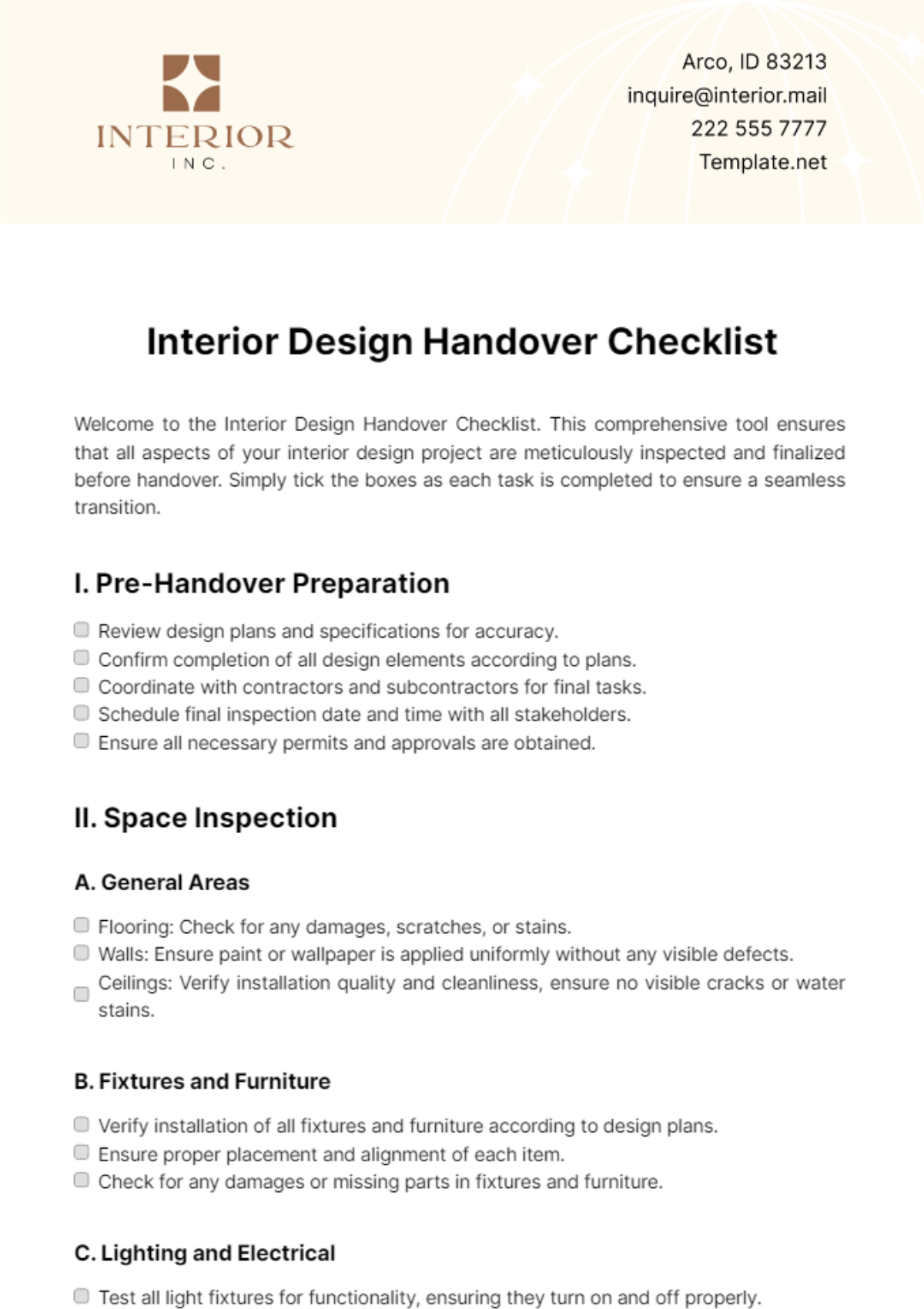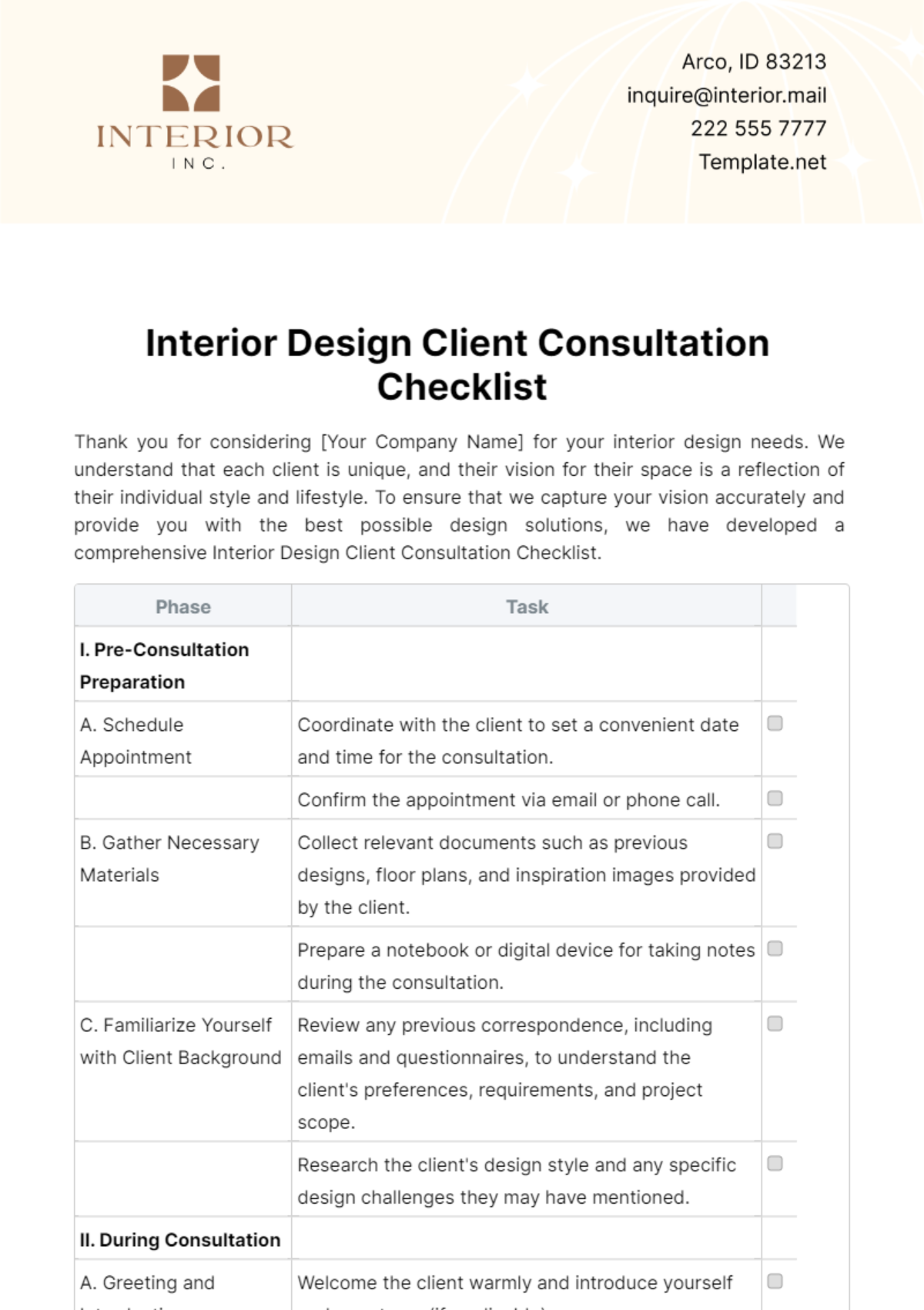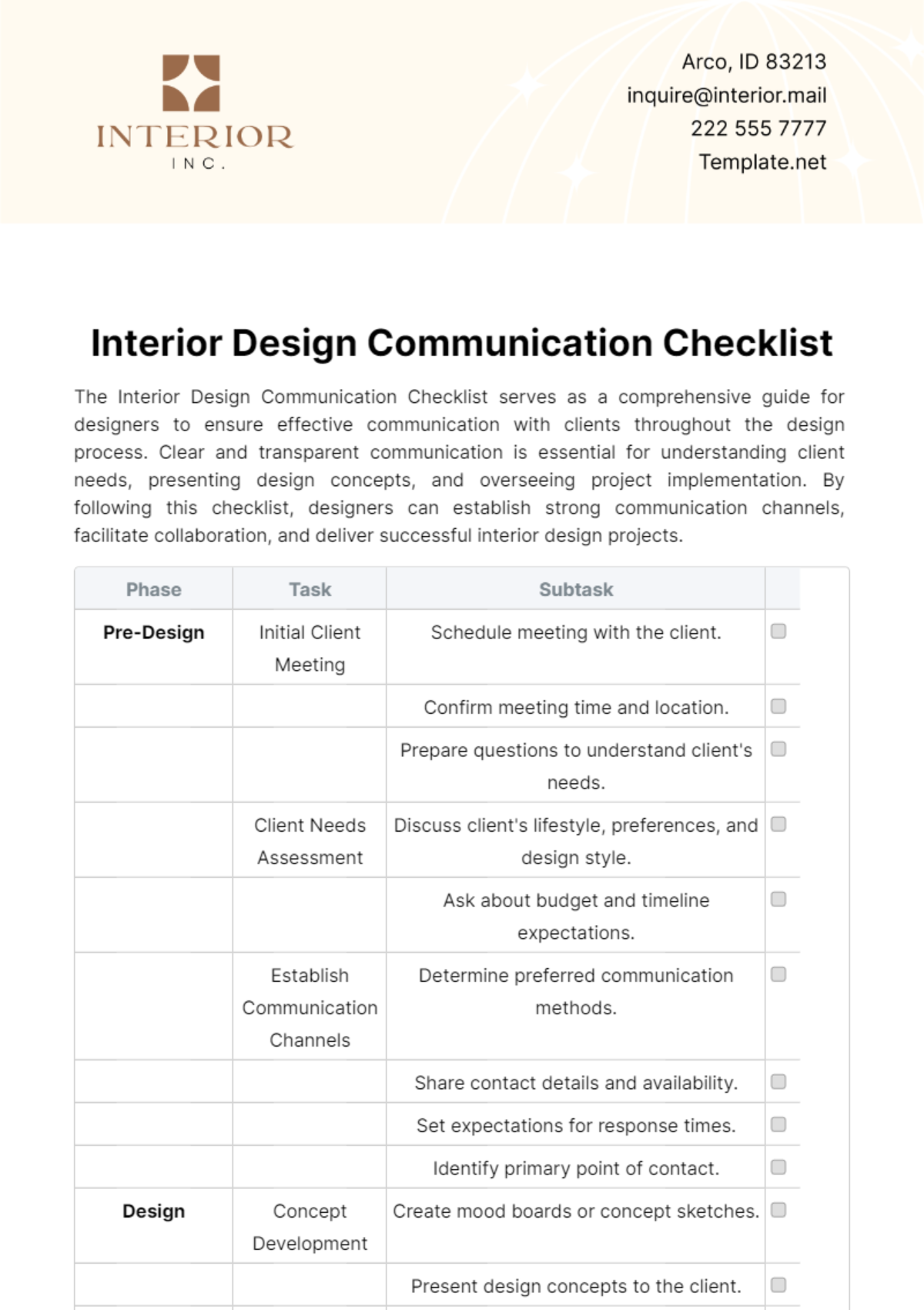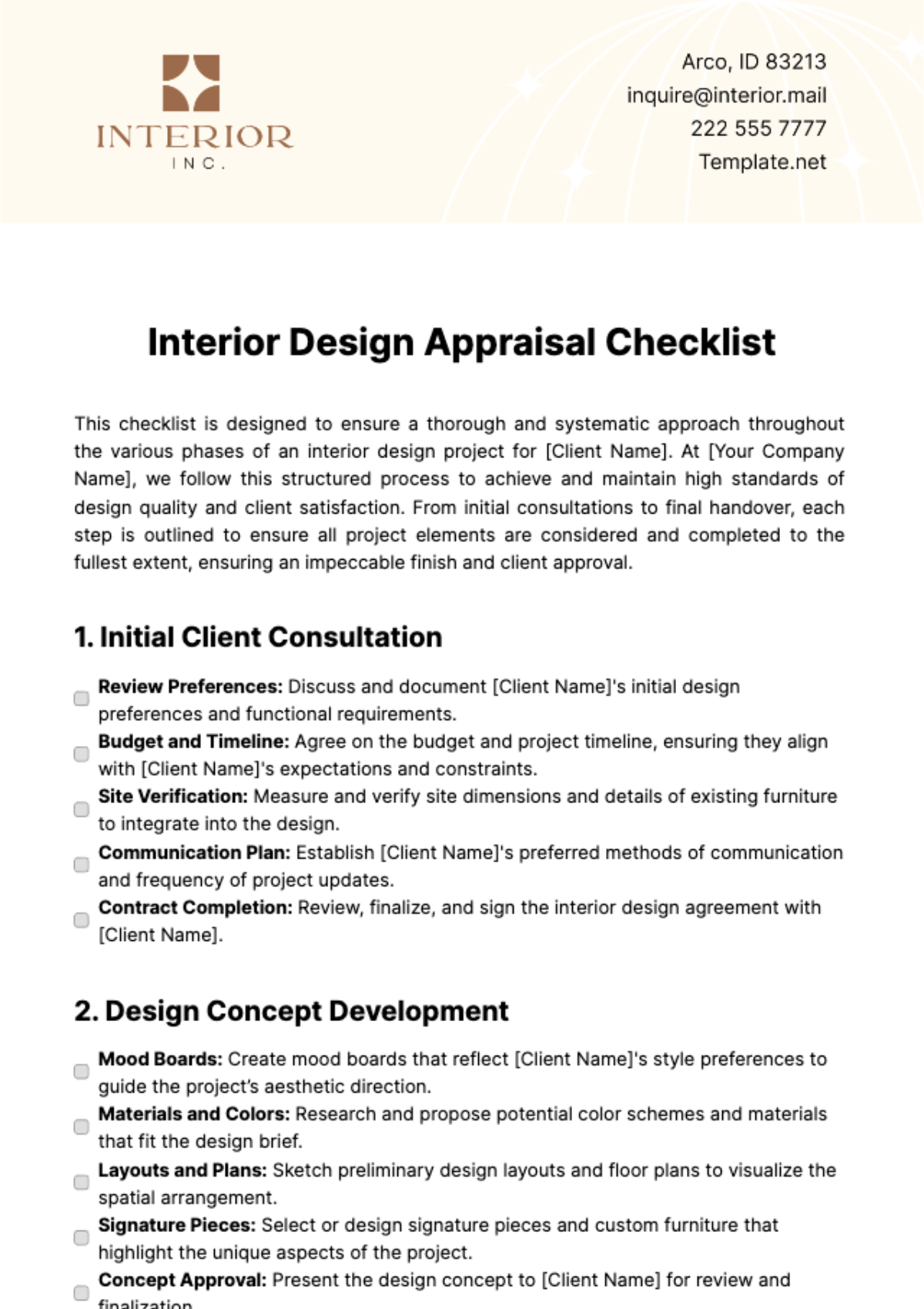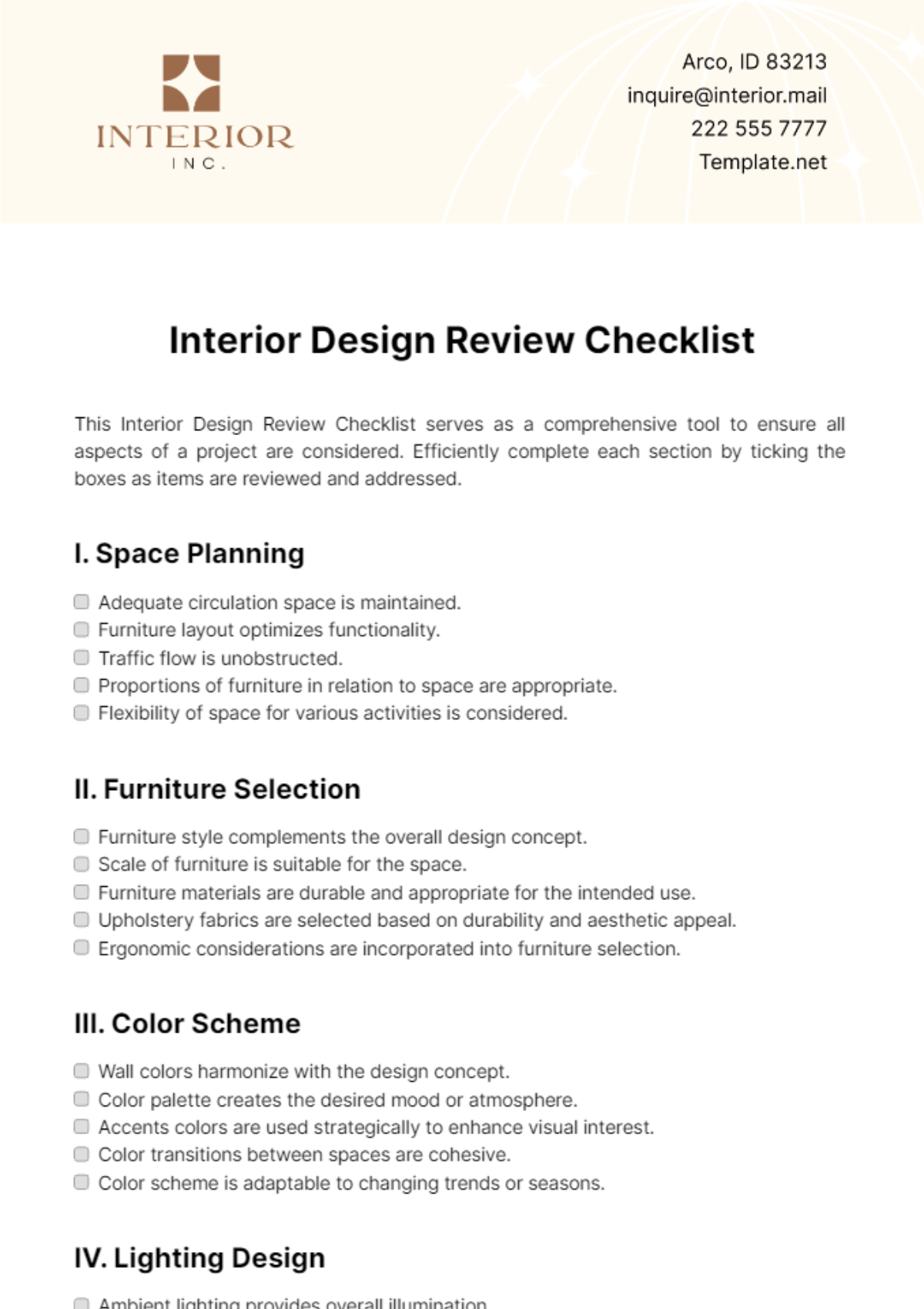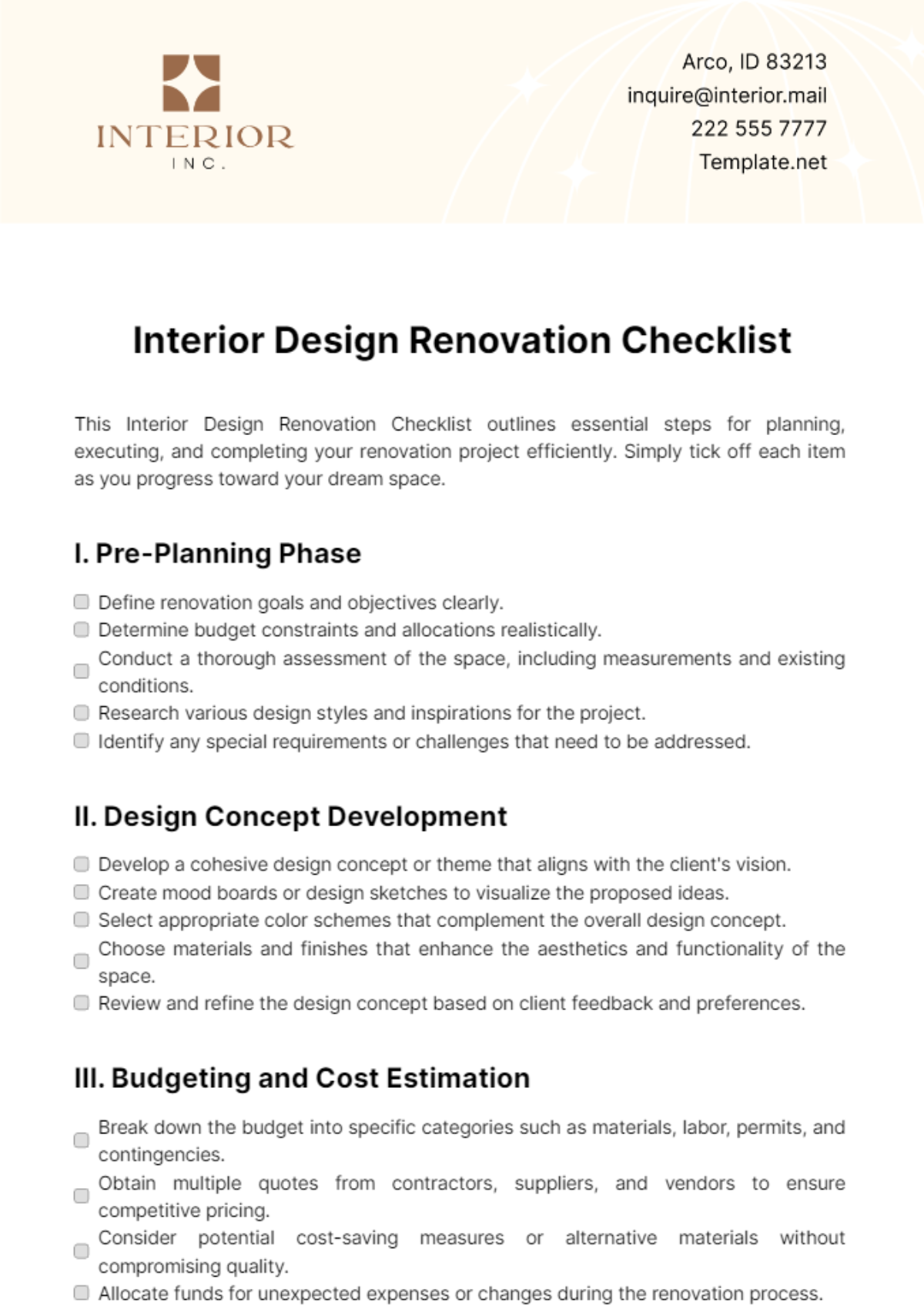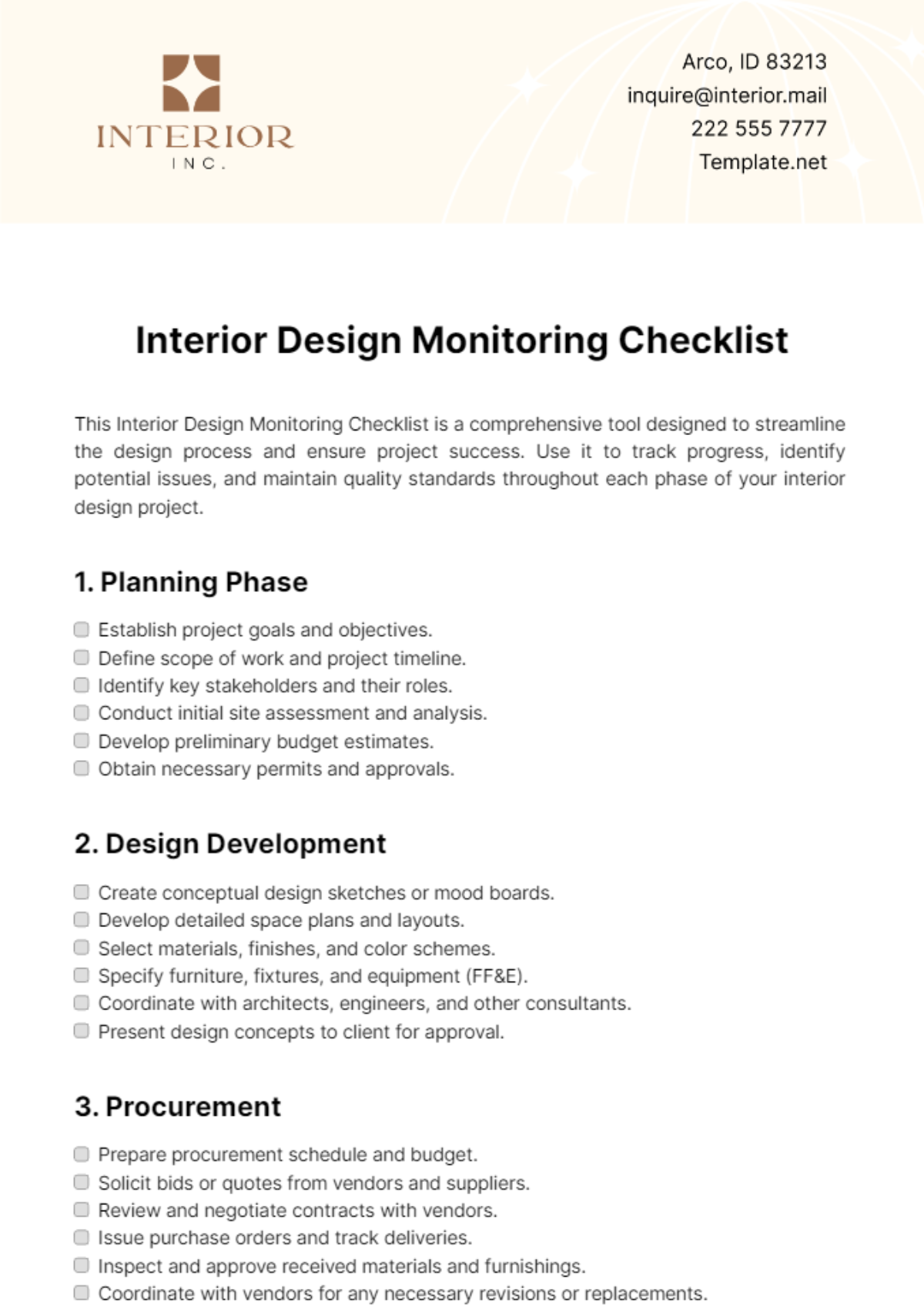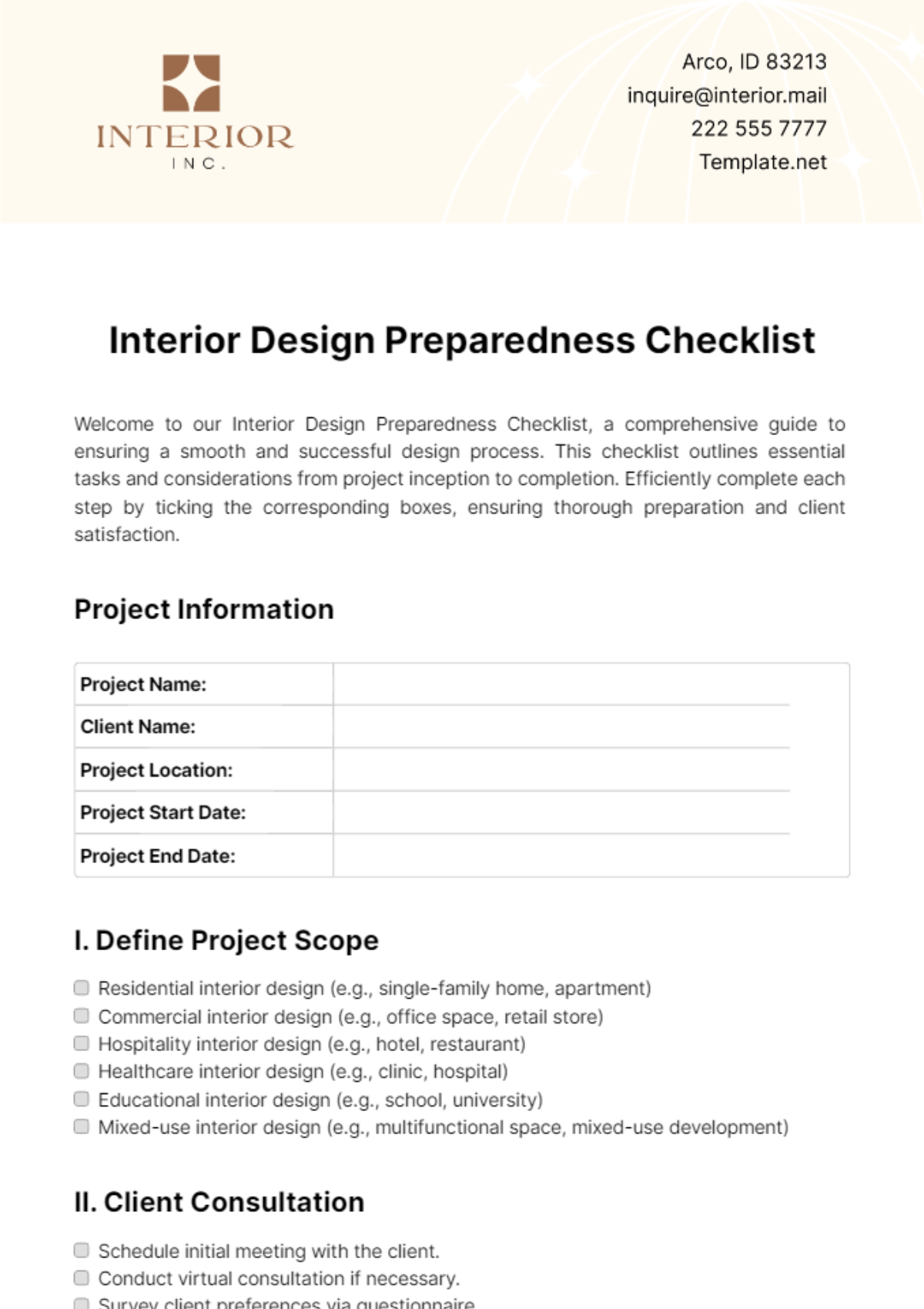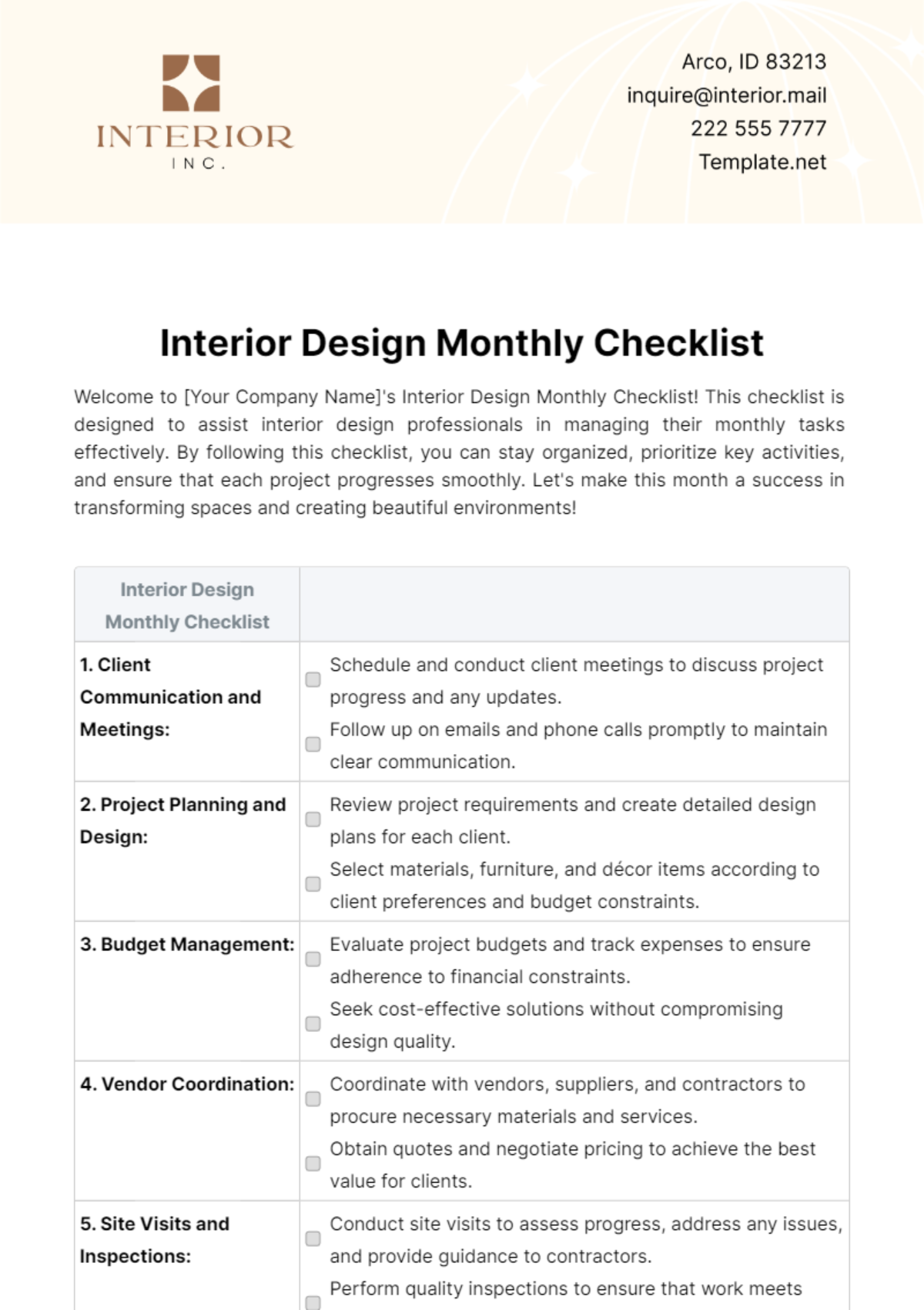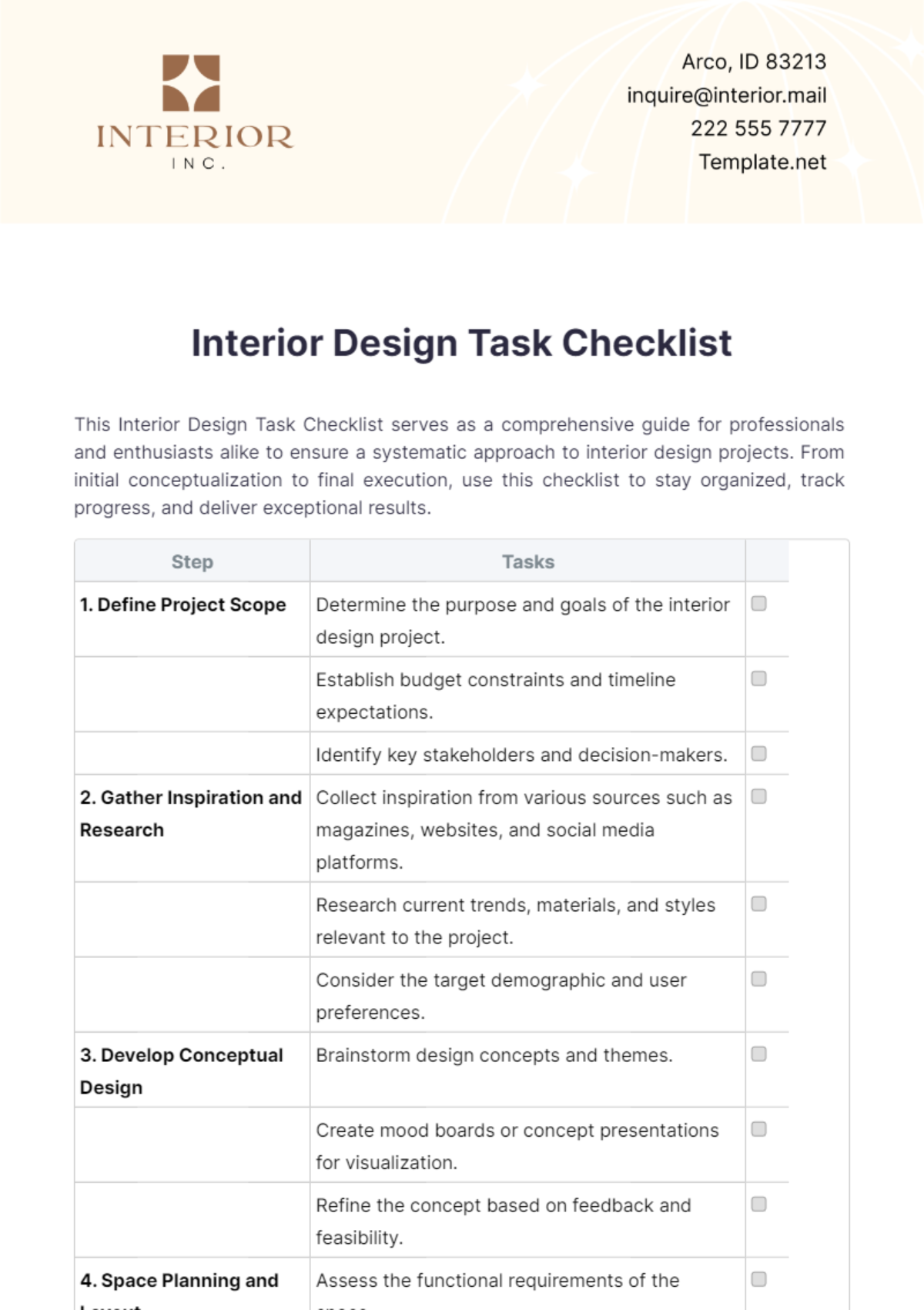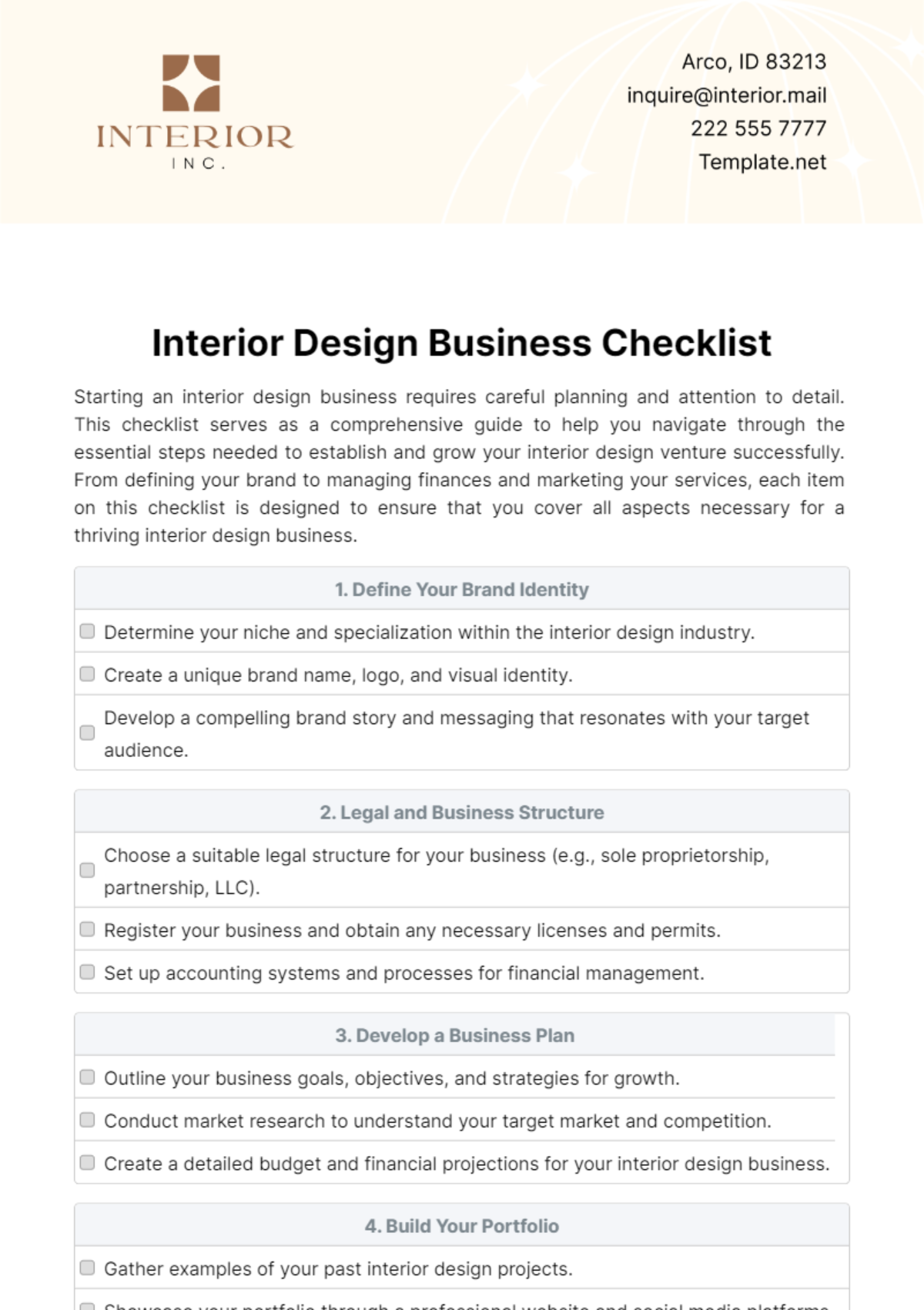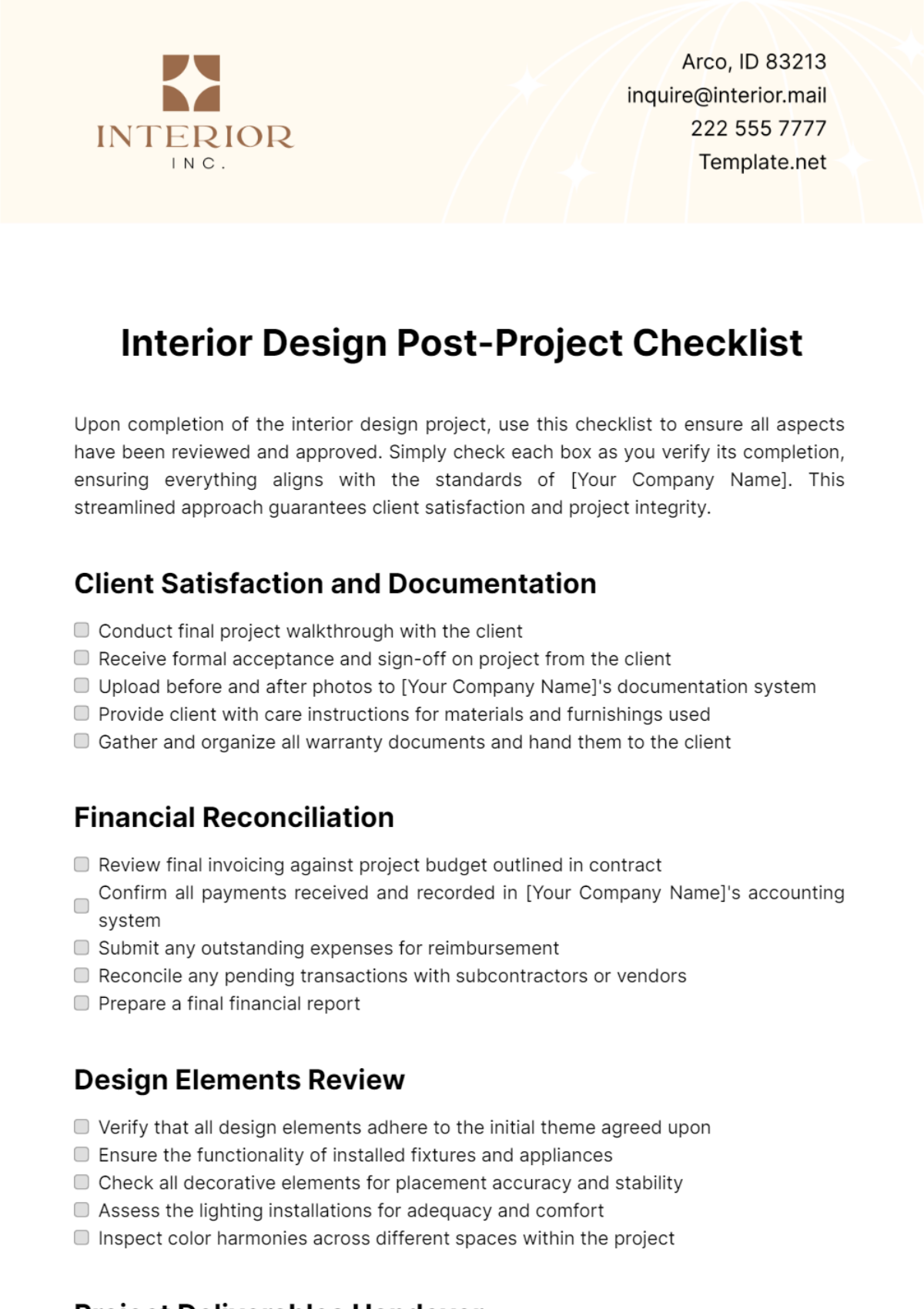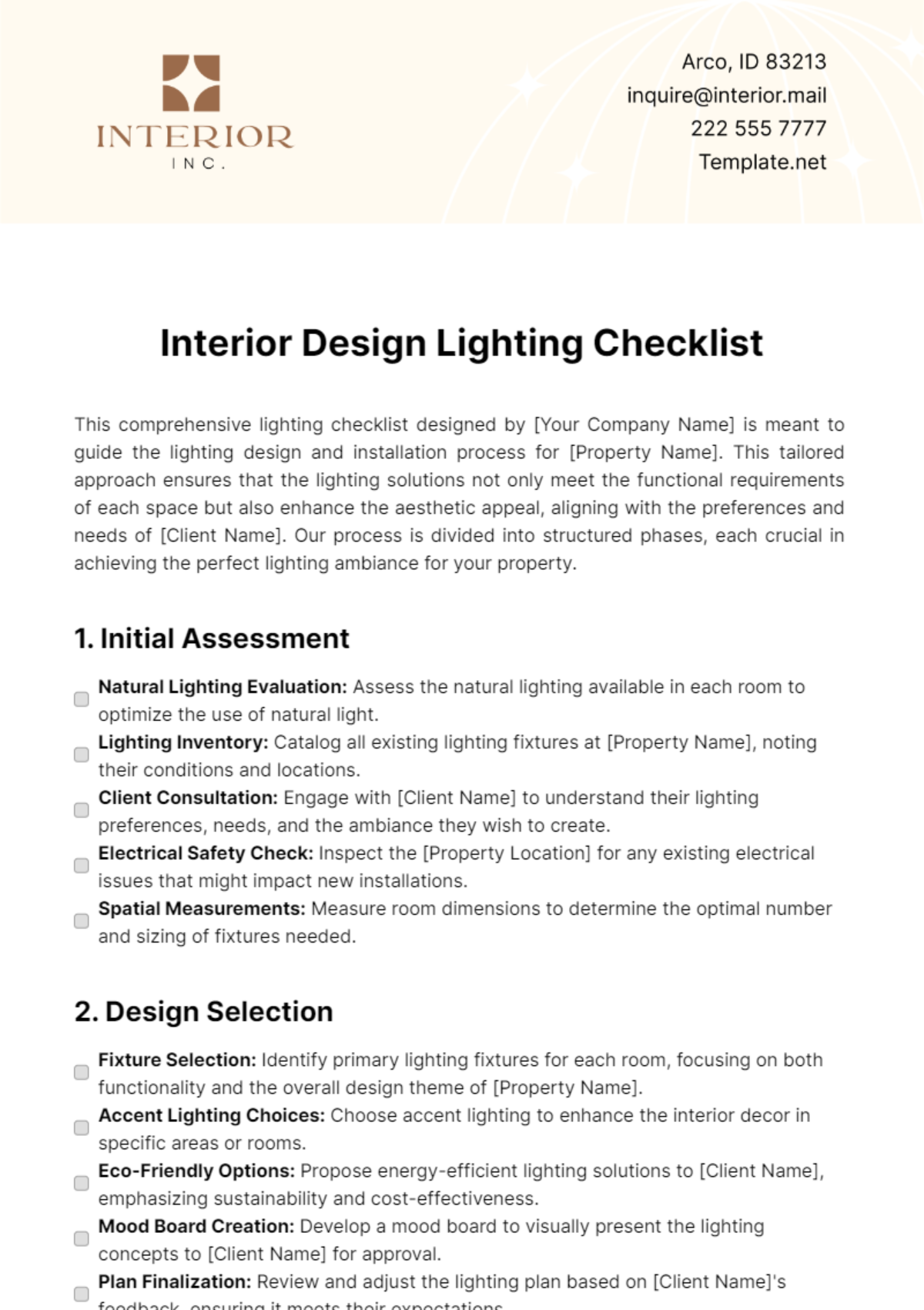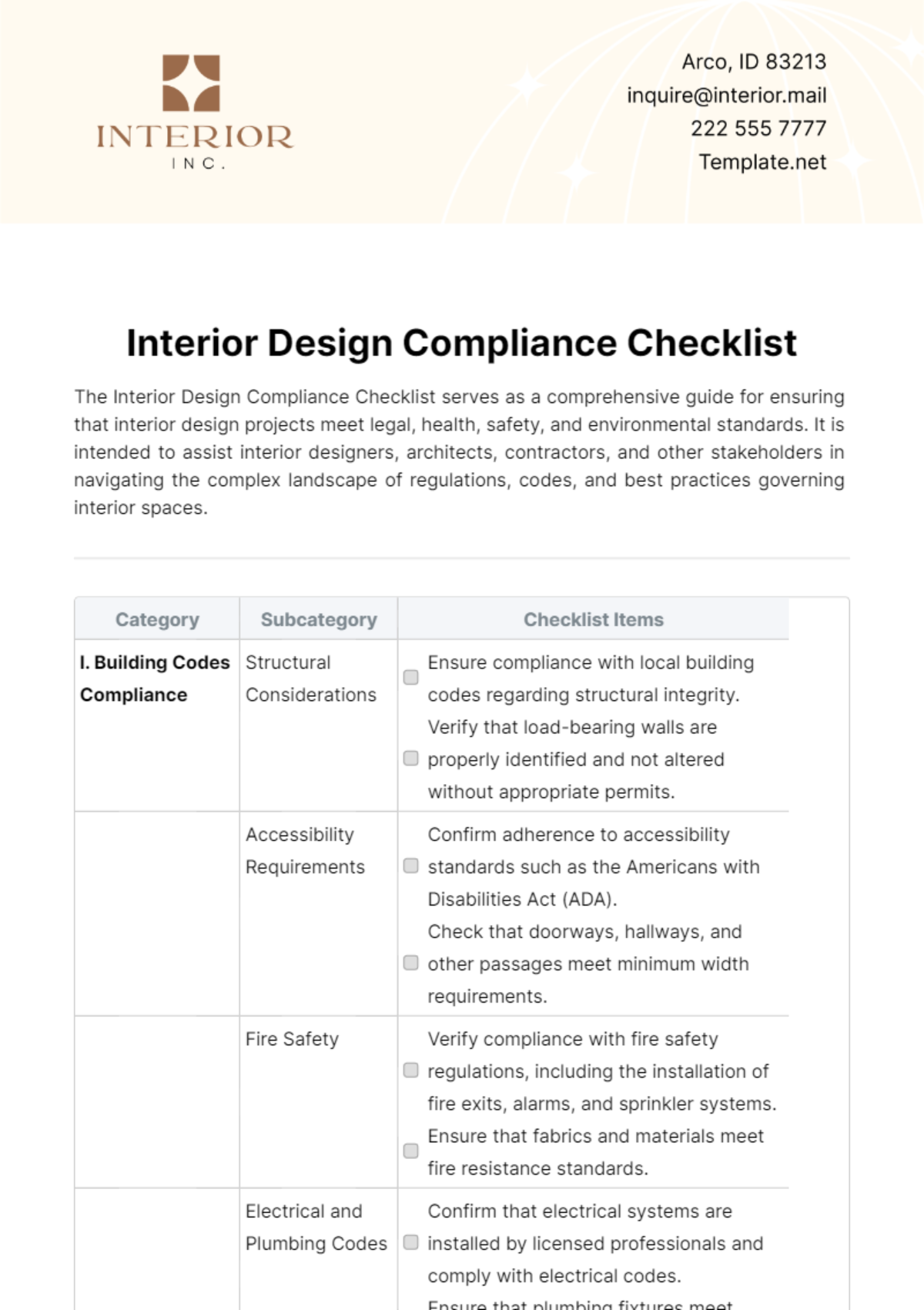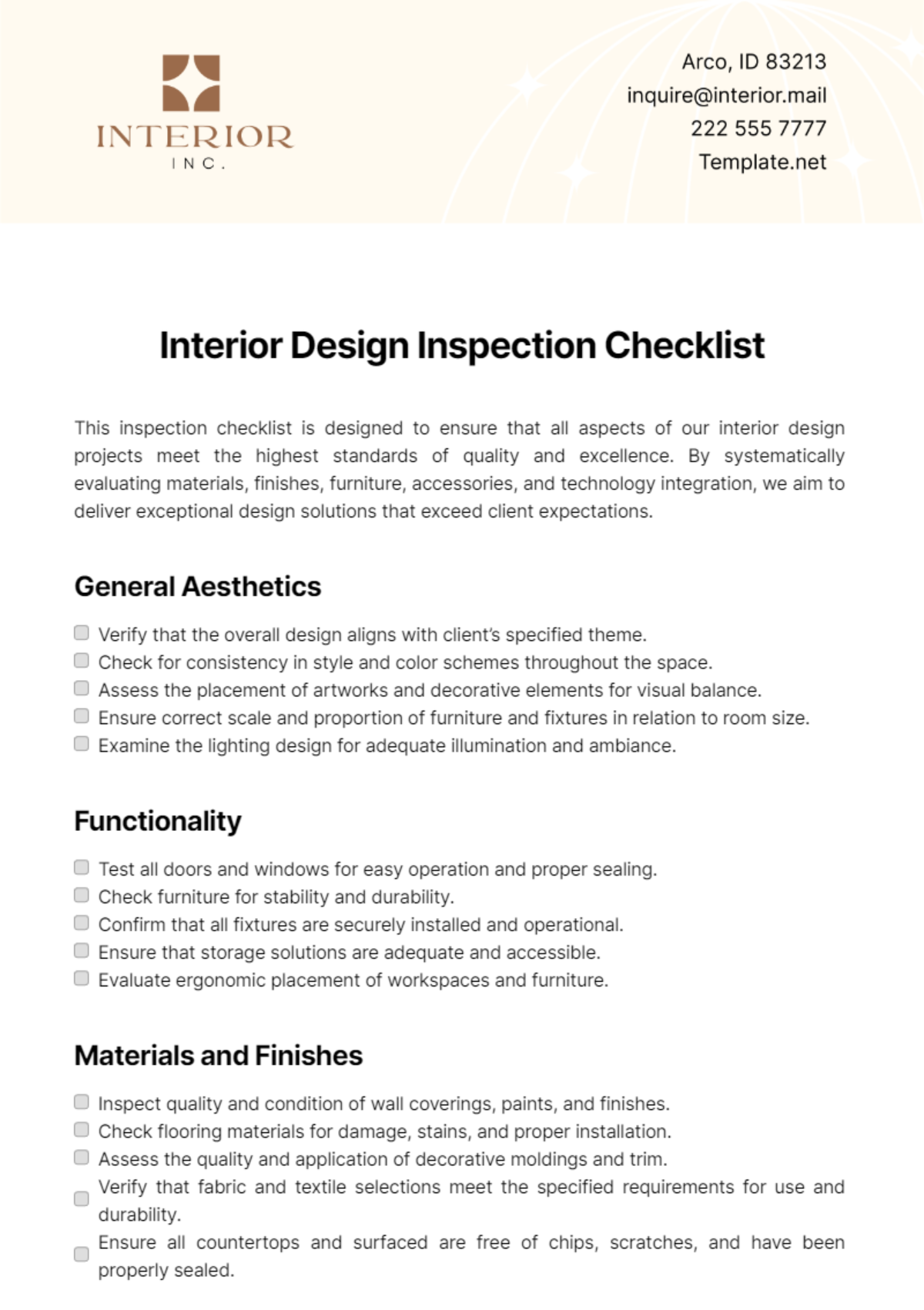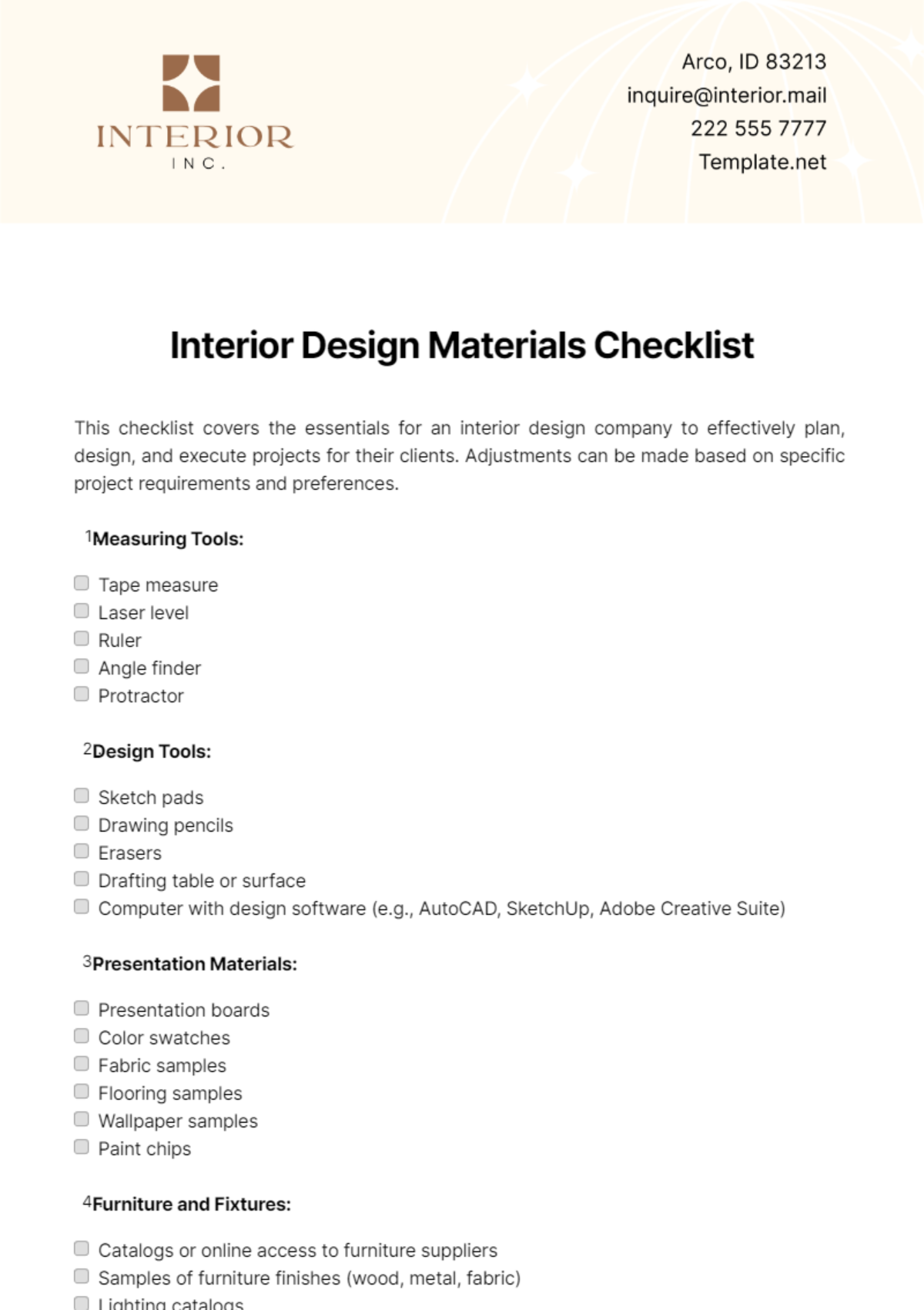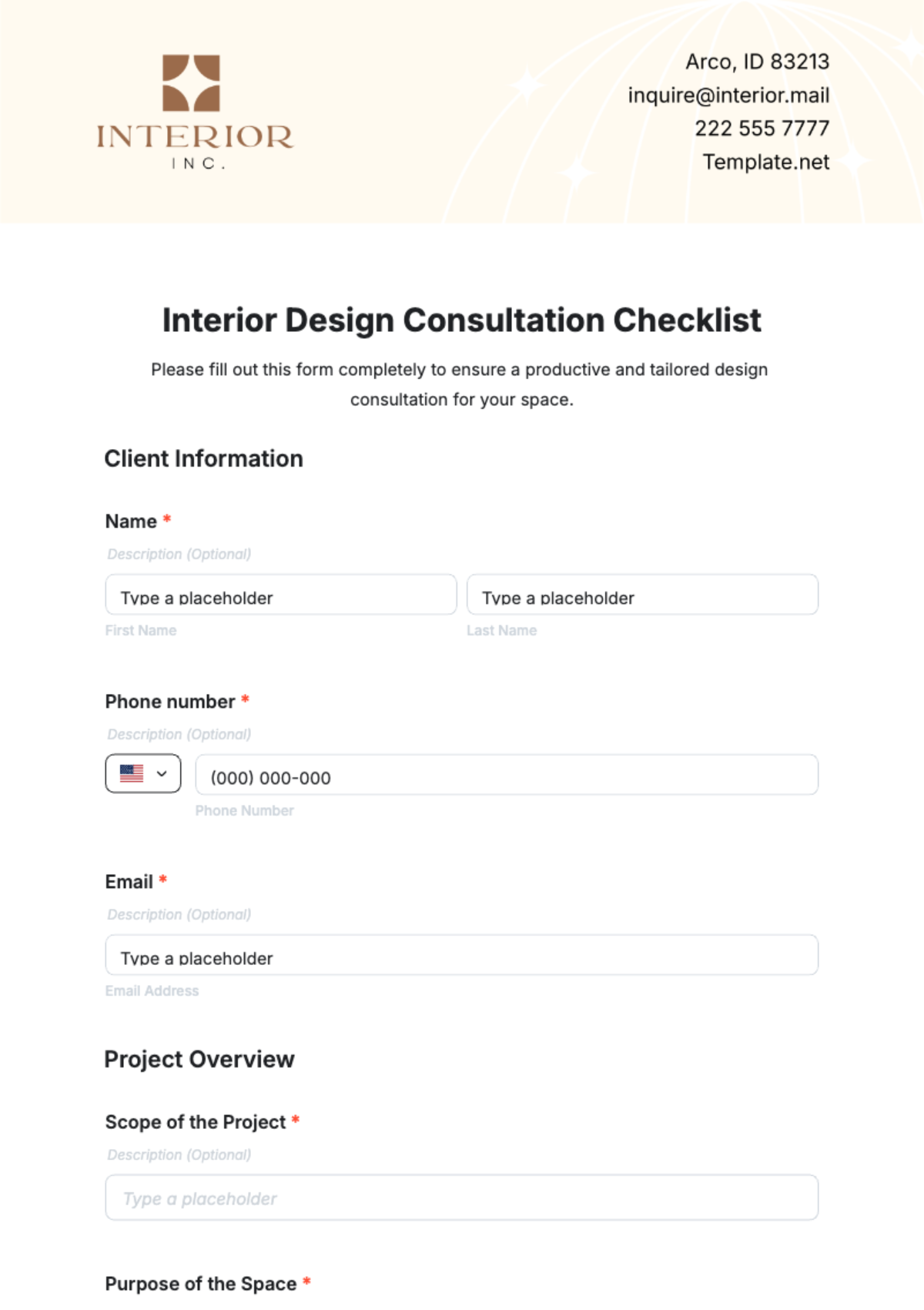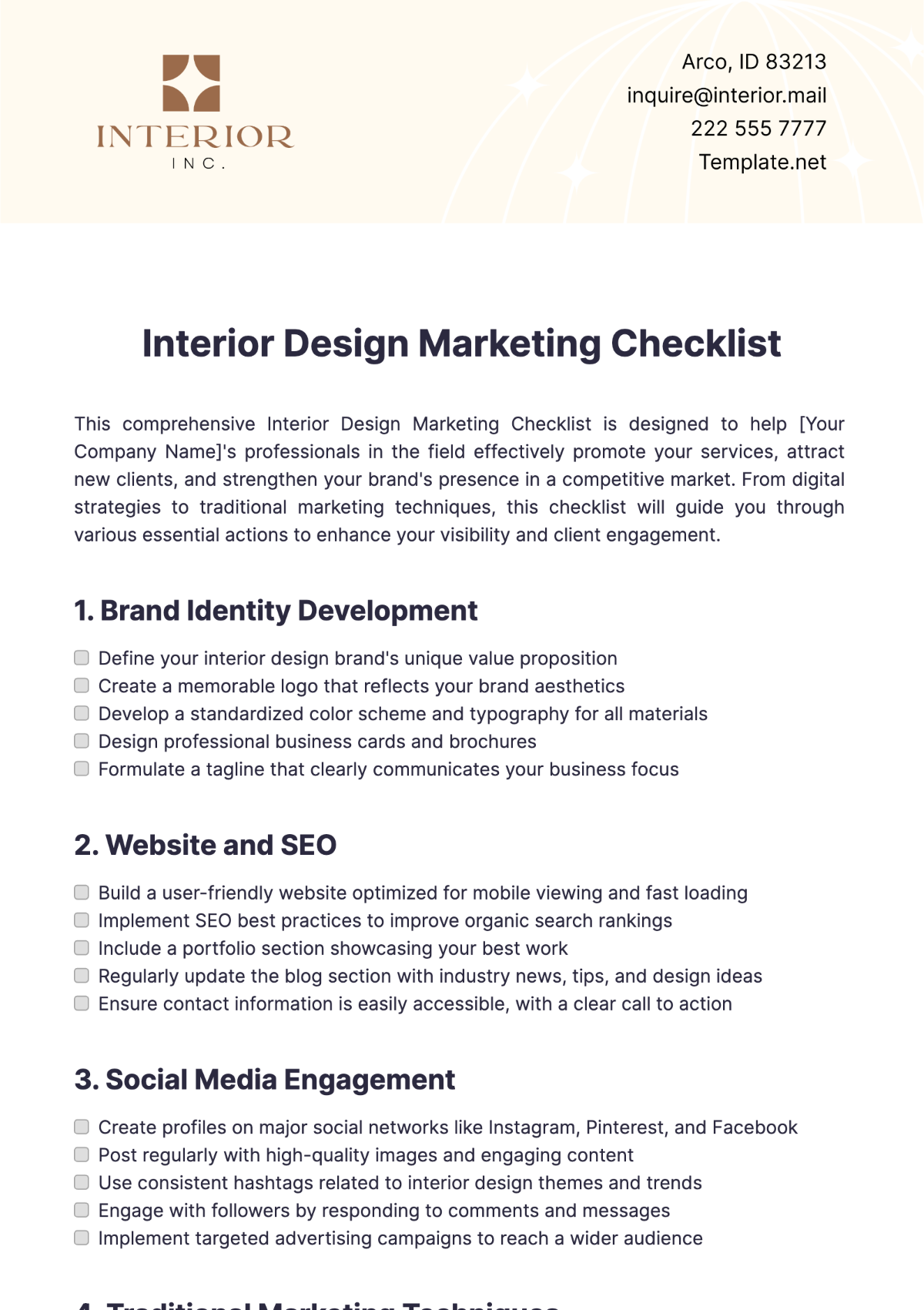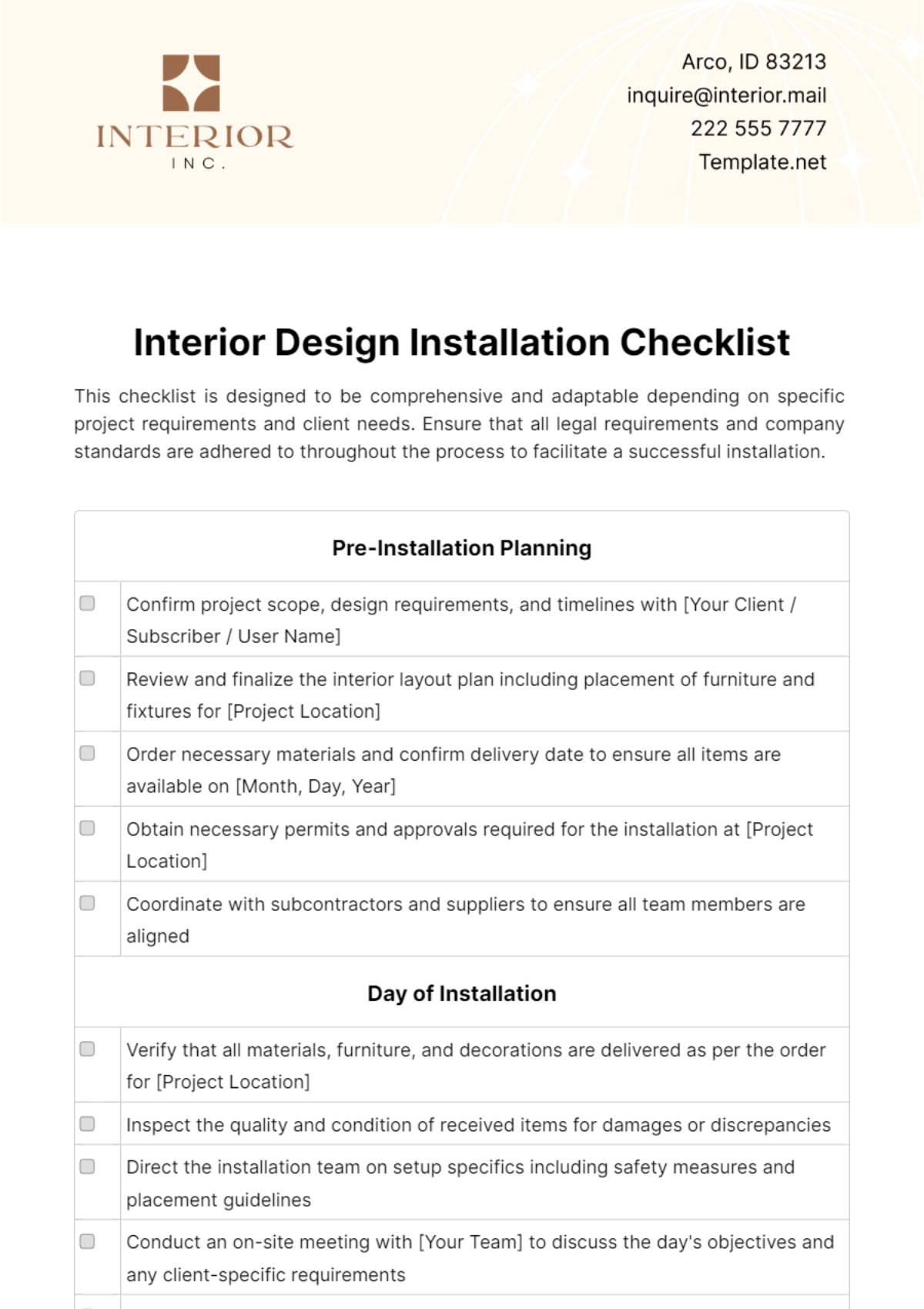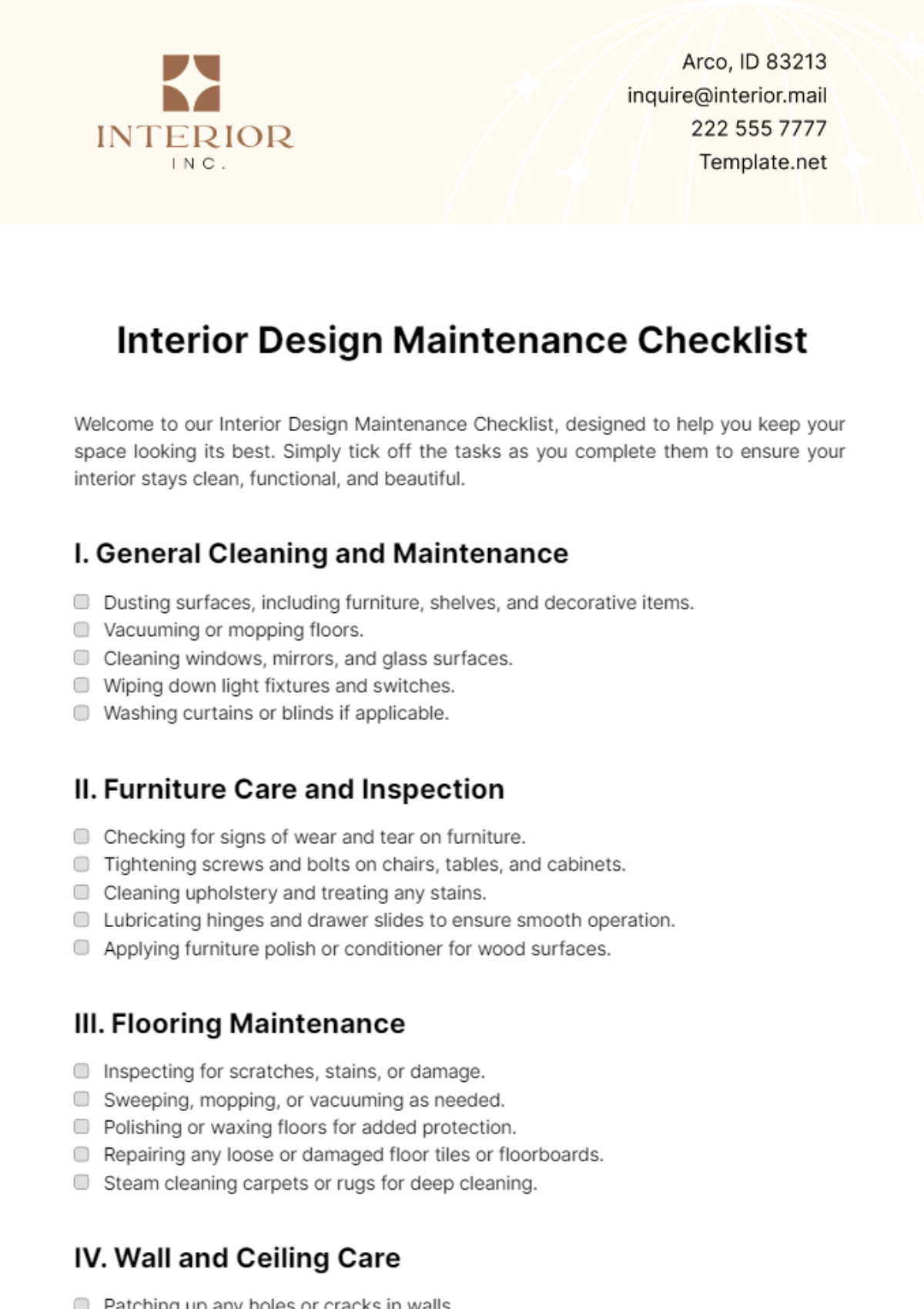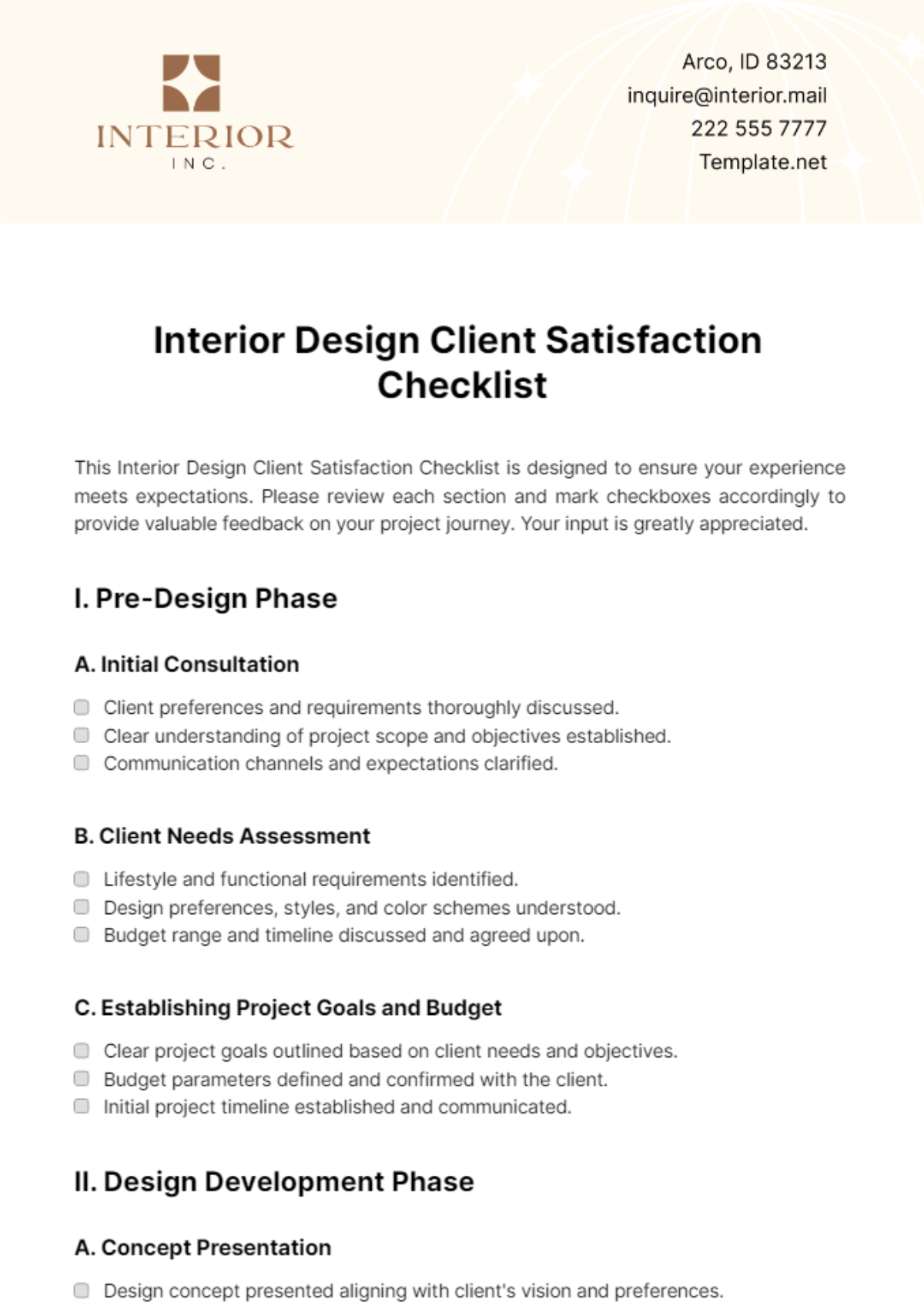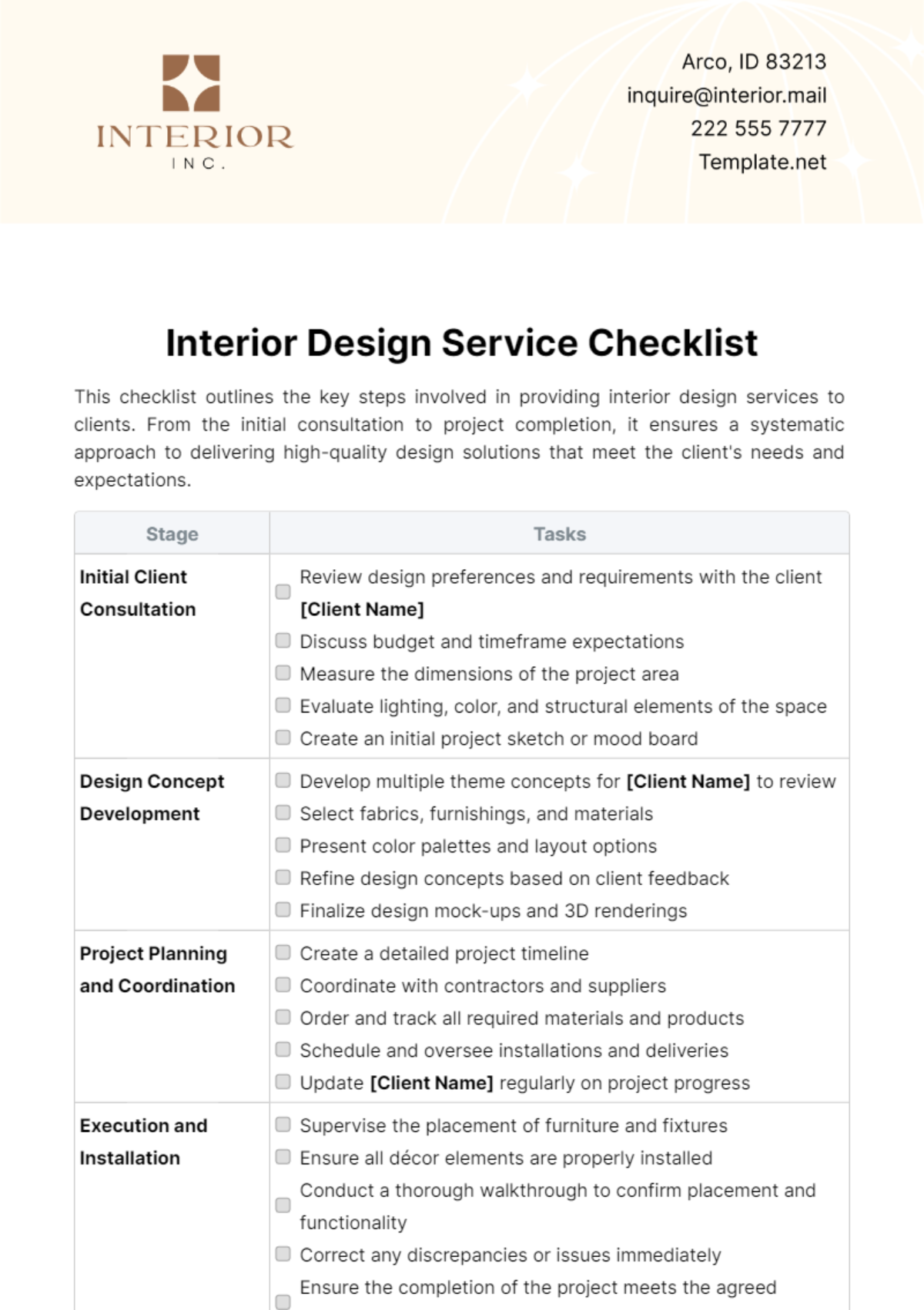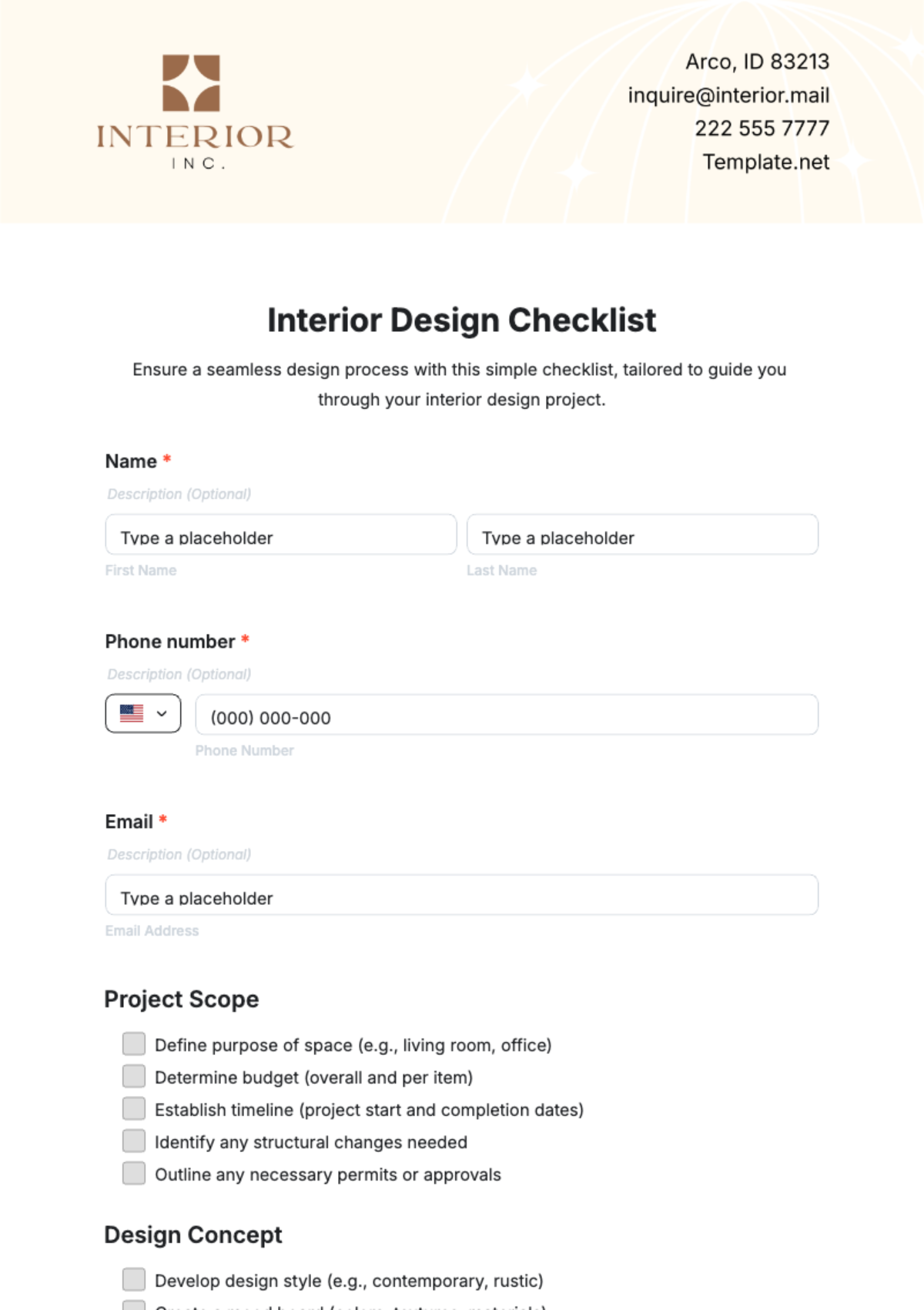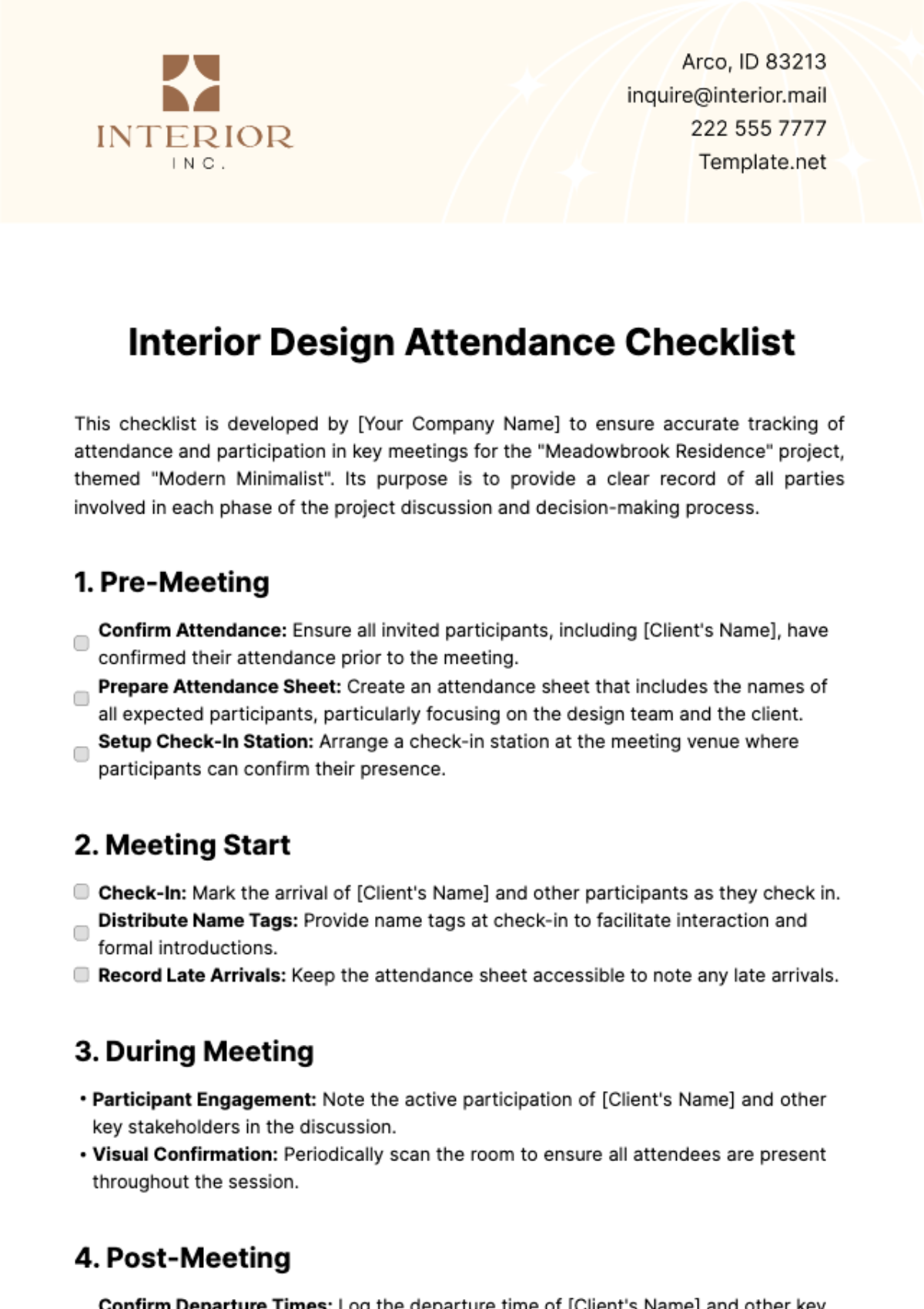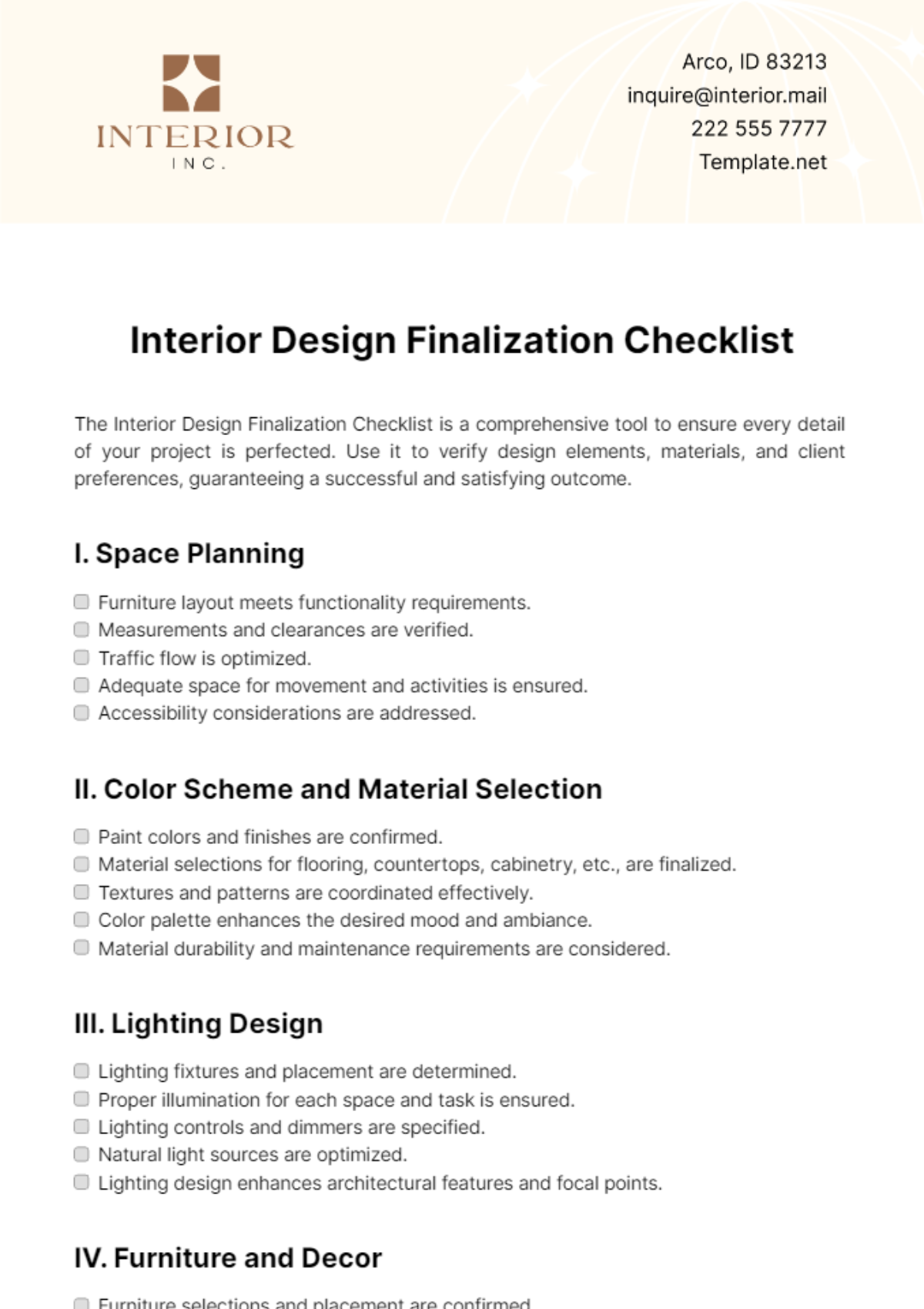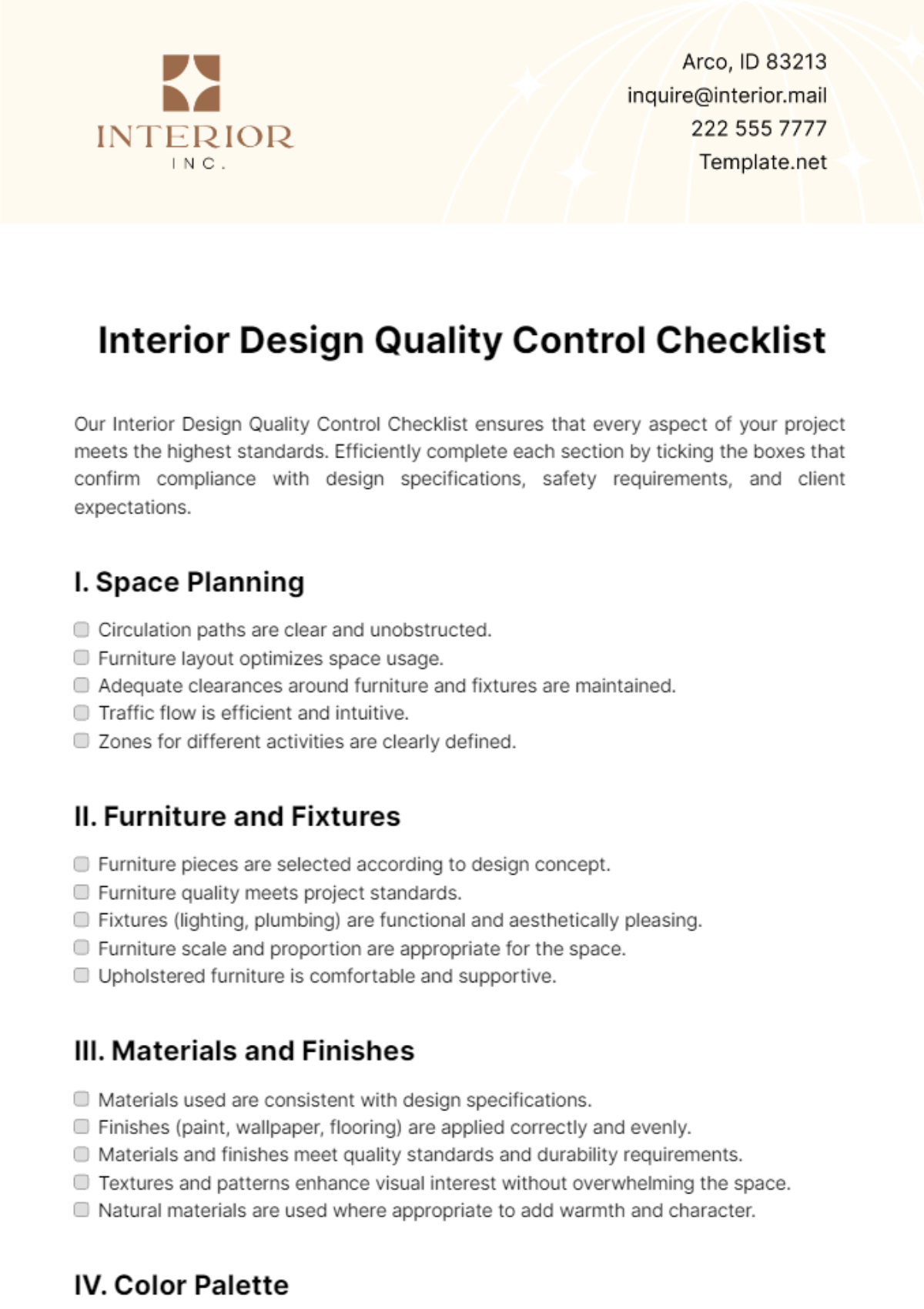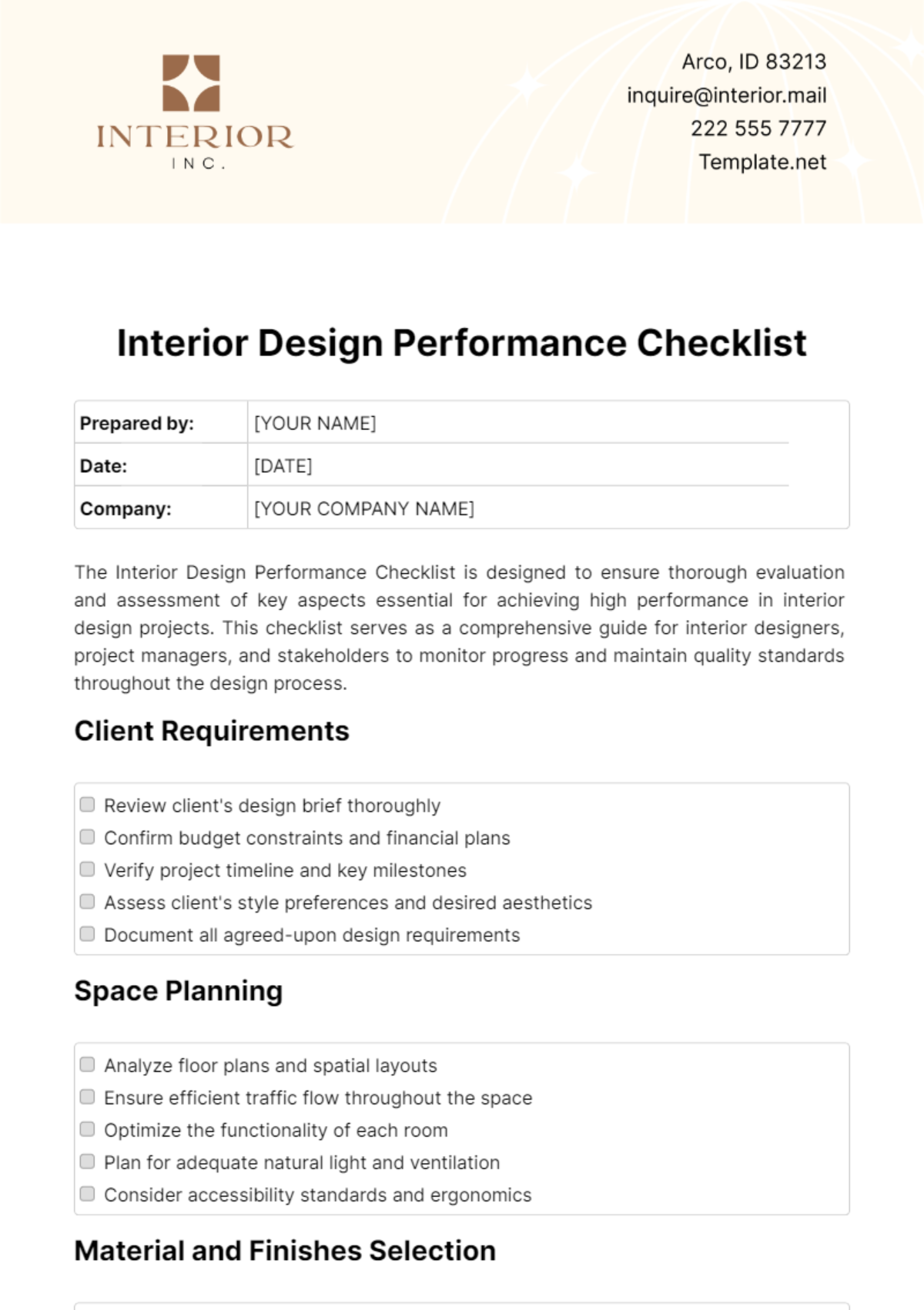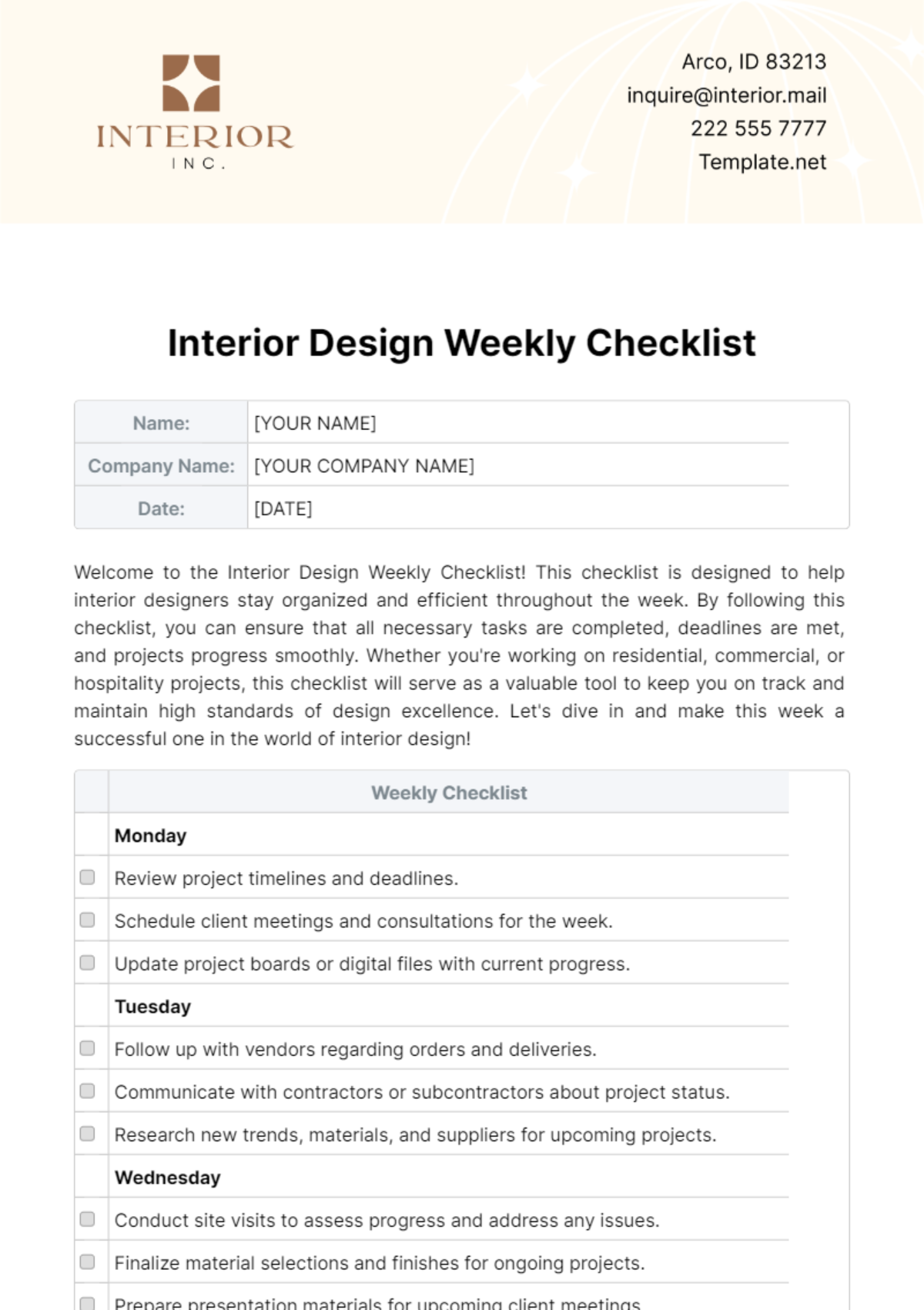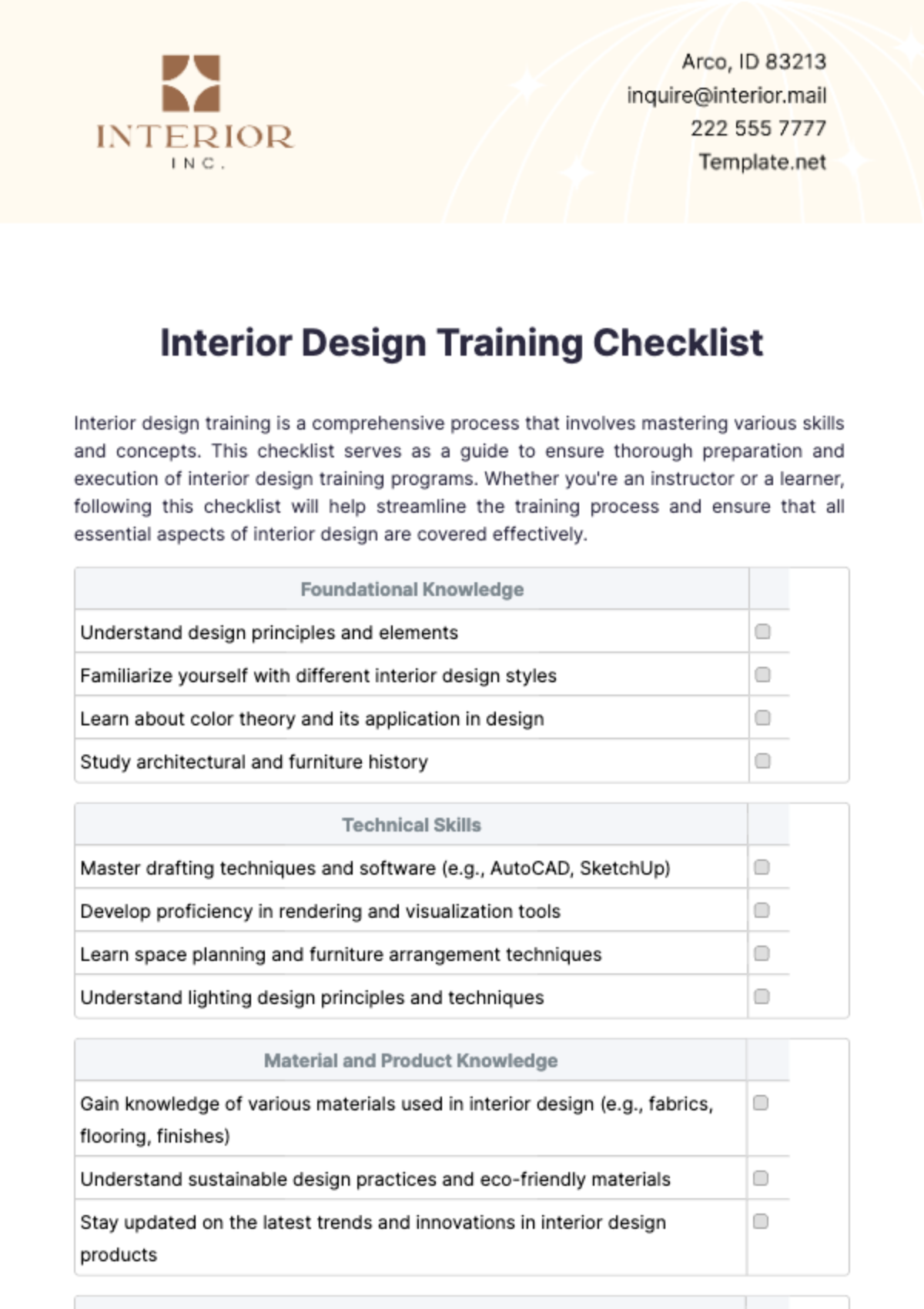Interior Design Task Checklist
This Interior Design Task Checklist serves as a comprehensive guide for professionals and enthusiasts alike to ensure a systematic approach to interior design projects. From initial conceptualization to final execution, use this checklist to stay organized, track progress, and deliver exceptional results.
Step | Tasks | |
|---|---|---|
1. Define Project Scope | Determine the purpose and goals of the interior design project. | |
Establish budget constraints and timeline expectations. | ||
Identify key stakeholders and decision-makers. | ||
2. Gather Inspiration and Research | Collect inspiration from various sources such as magazines, websites, and social media platforms. | |
Research current trends, materials, and styles relevant to the project. | ||
Consider the target demographic and user preferences. | ||
3. Develop Conceptual Design | Brainstorm design concepts and themes. | |
Create mood boards or concept presentations for visualization. | ||
Refine the concept based on feedback and feasibility. | ||
4. Space Planning and Layout | Assess the functional requirements of the space. | |
Develop preliminary floor plans and layouts. | ||
Optimize space utilization and traffic flow. | ||
5. Material and Finishes Selection | Choose appropriate materials, finishes, and color palettes. | |
Consider factors such as durability, maintenance, and aesthetics. | ||
Obtain samples and swatches for review and approval. | ||
6. Furniture and Fixture Specification | Select furniture pieces and fixtures that complement the design concept. | |
Ensure compatibility with the overall design scheme and spatial requirements. | ||
Verify dimensions, specifications, and availability. | ||
7. Lighting Design | Determine lighting requirements for ambient, task, and accent lighting. | |
Plan fixture placement and lighting controls. | ||
Consider natural light sources and daylighting strategies. | ||
8. Accessories and Decorative Elements | Curate accessories and decorative elements to enhance the design. | |
Balance scale, proportion, and visual interest. | ||
Incorporate personal touches and client preferences. | ||
9. Documentation and Presentation | Compile design drawings, specifications, and documentation. | |
Create presentation materials for client review and approval. | ||
Organize and communicate design intent effectively. | ||
10. Implementation and Project Management | Coordinate with contractors, vendors, and other stakeholders. | |
Monitor project progress and address any issues or changes. | ||
Ensure quality control and adherence to design standards. | ||
11. Finalization and Client Handover | Conduct final walkthroughs and snagging inspections. | |
Address any outstanding issues or punch list items. | ||
Provide client with relevant documentation, warranties, and maintenance instructions. | ||
12. Post-Completion Evaluation | Solicit feedback from clients and stakeholders. | |
Assess project success and areas for improvement. | ||
Document lessons learned for future projects. |
